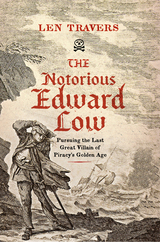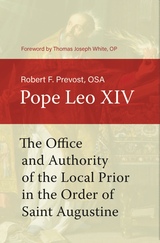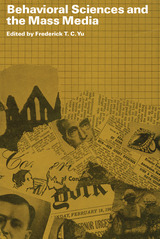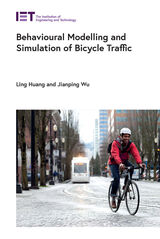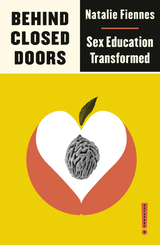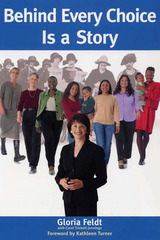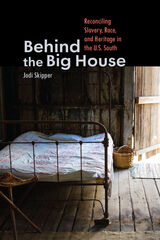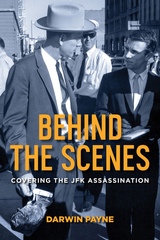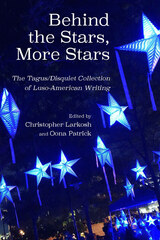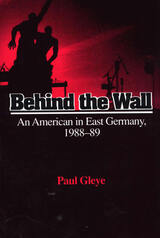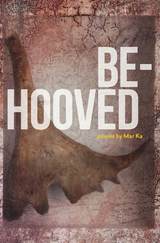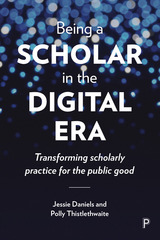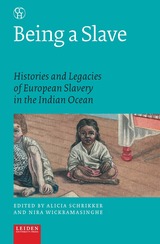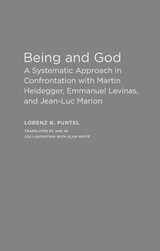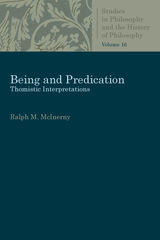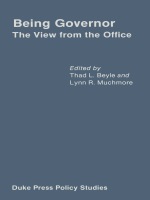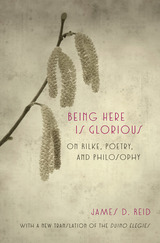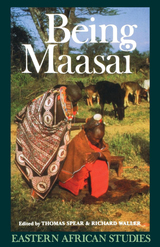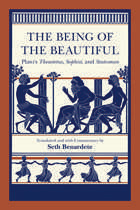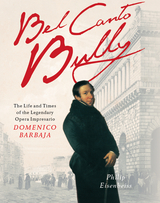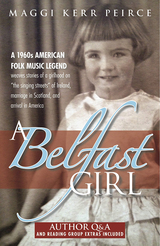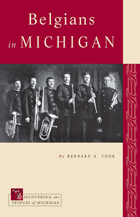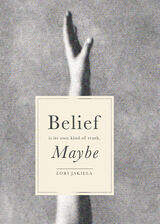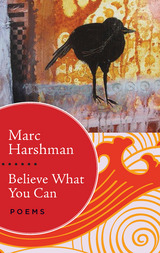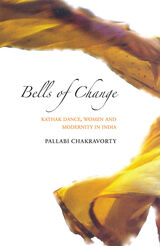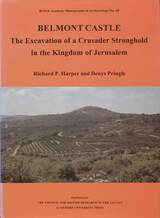Behavioral Sciences and the Mass Media
Frederick T. C. Yu
Russell Sage Foundation, 1968 Presents papers which were discussed at the Arden House Conference—a conference held to establish a working relationship between sociologists at the Russell Sage Foundation and journalists of the Graduate School of Journalism of Columbia University. Both behavioral science and journalism have for a long time been concerned with some of the same major national social problems—juvenile delinquency, urban problems, race and minority group relations, international tensions, and labor relations. These papers touch on some of the barriers to communication and point to possible ways of breaking through those barriers.
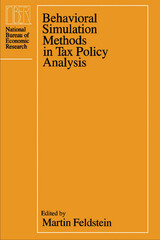 Behavioral Simulation Methods in Tax Policy Analysis
Edited by Martin Feldstein
University of Chicago Press, 1983 These thirteen papers and accompanying commentaries are the first fruits of an ongoing research project that has concentrated on developing simulation models that incorporate the behavioral responses of individuals and businesses to alternative tax rules and rates and on expanding computational general equilibrium models that analyze the long-run effects of changes on the economy as a whole.
The principal focus of the project has been on the microsimulation of individual behavior. Thus, this volume includes studies of individual responses to an over reduction in tax rates and to changes in the highest tax rates; a study of alternative tax treatments of the family; and studies of such specific aspects of household behavior as tax treatment of home ownership, charitable contributions, and individual saving behavior. Microsimulation techniques are also used to estimate the effects of alternative policies on the long-run financial status of the social security program and to examine the effects of alternative tax rules on corporate investment and of foreign-source income on overseas investment.
The papers devoted to the development of general equilibrium simulation models to include an examination of the implications of international trade and capital flows, a study of the effects of capital taxation that uses a closed economy equilibrium model, and an examination of the effect of switching to an inflation-indexed tax system. In the volume's final paper, a life-cycle model in which individuals maximize lifetime utility subject to a lifetime budget constraint is used to simulate the effects of tax rules on personal savings.
 Behaviour in the Classroom: The Practical Guide
Olivia Dear
Amsterdam University Press, 2024 Behaviour in the Classroom, The Practical Guide is for any teacher who wants to make their classroom environment a better one for children to learn in. Olivia Dear and Sarah Dear, drawing on their diverse experiences, break down the seemingly intuitive skills that effective teachers possess into manageable steps any teacher can learn. It transcends one-size-fits-all solutions, offering a nuanced approach to classroom management. The authors translate the complexities of behaviour research into practical examples. The six comprehensive steps, categorised into planning and teaching moments, empower teachers to establish a culture where desirable behaviour is the norm in their classroom. Beyond ‘know-that’, the book sets out to equip teachers with the ‘know-how’ to navigate diverse scenarios confidently.
Whether you’re a new or experienced teacher, this guide is avaluable companion for creating classroom environments in which every child can thrive.
Behavioural Modelling and Simulation of Bicycle Traffic
Ling Huang
The Institution of Engineering and Technology, 2021 Cycling is an important part of the urban transport system and short-distance travel in many modern cities around the world. With no emissions and occupying much less road space than cars, bikes are clean and sustainable. Bicycle traffic needs to be tracked and analysed in order to generate reliable predictions and make correct decisions when adapting and building traffic infrastructure, to account for bikes in road traffic systems, and to model and plan interactions between bikes and autonomous vehicles.
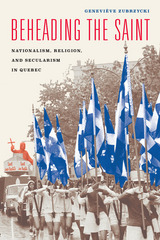 Beheading the Saint: Nationalism, Religion, and Secularism in Quebec
Geneviève Zubrzycki
University of Chicago Press, 2016 Through much of its existence, Québec’s neighbors called it the “priest-ridden province.” Today, however, Québec society is staunchly secular, with a modern welfare state built on lay provision of social services—a transformation rooted in the “Quiet Revolution” of the 1960s.
In Beheading the Saint, Geneviève Zubrzycki studies that transformation through a close investigation of the annual Feast of St. John the Baptist of June 24. The celebrations of that national holiday, she shows, provided a venue for a public contesting of the dominant ethno-Catholic conception of French Canadian identity and, via the violent rejection of Catholic symbols, the articulation of a new, secular Québécois identity. From there, Zubrzycki extends her analysis to the present, looking at the role of Québécois identity in recent debates over immigration, the place of religious symbols in the public sphere, and the politics of cultural heritage—issues that also offer insight on similar debates elsewhere in the world.
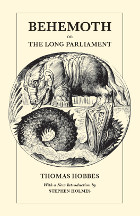 Behemoth or The Long Parliament
Thomas Hobbes
University of Chicago Press, 1990 Behemoth, or The Long Parliament is essential to any reader interested in the historical context of the thought of Thomas Hobbes (1588-1679). In De Cive (1642) and Leviathan (1651), the great political philosopher had developed an analytical framework for discussing sedition, rebellion, and the breakdown of authority. Behemoth, completed around 1668 and not published until after Hobbe's death, represents the systematic application of this framework to the English Civil War.
In his insightful and substantial Introduction, Stephen Holmes examines the major themes and implications of Behemoth in Hobbes's system of thought. Holmes notes that a fresh consideration of Behemoth dispels persistent misreadings of Hobbes, including the idea that man is motivated solely by a desire for self-preservation. Behemoth, which is cast as a series of dialogues between a teacher and his pupil, locates the principal cause of the Civil War less in economic interests than in the stubborn irrationality of key actors. It also shows more vividly than any of Hobbe's other works the importance of religion in his theories of human nature and behavior.
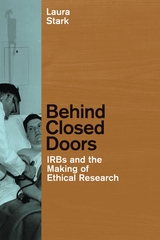 Behind Closed Doors: IRBs and the Making of Ethical Research
Laura Stark
University of Chicago Press, 2011 Although the subject of federally mandated Institutional Review Boards (IRBs) has been extensively debated, we actually do not know much about what takes place when they convene. The story of how IRBs work today is a story about their past as well as their present, and Behind Closed Doors is the first book to meld firsthand observations of IRB meetings with the history of how rules for the treatment of human subjects were formalized in the United States in the decades after World War II. Drawing on extensive archival sources, Laura Stark reconstructs the daily lives of scientists, lawyers, administrators, and research subjects working—and “warring”—on the campus of the National Institutes of Health, where they first wrote the rules for the treatment of human subjects. Stark argues that the model of group deliberation that gradually crystallized during this period reflected contemporary legal and medical conceptions of what it meant to be human, what political rights human subjects deserved, and which stakeholders were best suited to decide. She then explains how the historical contingencies that shaped rules for the treatment of human subjects in the postwar era guide decision making today—within hospitals, universities, health departments, and other institutions in the United States and across the globe. Meticulously researched and gracefully argued, Behind Closed Doors will be essential reading for sociologists and historians of science and medicine, as well as policy makers and IRB administrators.
Behind Closed Doors: Sex Education Transformed
Natalie Fiennes
Pluto Press, 2019 One thing we know for certain is that sex is personal: perhaps the most intimate thing of all. But sex is also shaped by a complicated web of cultural, social and political forces outside of ourselves.
Fear-mongering, moral panic and outdated attitudes prevail, but if #MeToo has taught us anything, it's how dangerous it is to keep conversations about sex hidden from view. Behind Closed Doors invests in a radical, inclusive and honest sex education, taking us beyond learning about the 'birds and the bees', to identifying inequality that stands in the way of sexual freedom.
From contraceptives to virginity, consent to pornography, transphobia to sexual abuse, the book shows how our desires are influenced by powerful political processes that can be transformed.
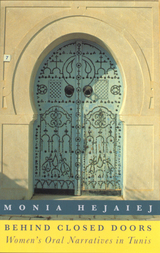 Behind Closed Doors: Women's Oral Narratives in Tunis
Hejaiej, Monia
Rutgers University Press, 1996 Tunis has a long history of city life reaching back to ancient times. The Arabic language is firmly rooted among its inhabitants and most embrace the morals and culture of Islam. Behind Closed Doors presents forty-seven tales told by three Beldi women, members of a historic and highly civilized community, the city's traditional elite. Tale-telling is important to all Beldi women, and the book examines its role in their shared world and its significance in the lives of the three tellers. Tales are told at communal gatherings to share and pass on Beldi women's secret lore of love, marriage and destiny. Ghaya Sa'diyya and Kheira tell stories which echo their life experience and have deep meanings for them. Their tales reflect accepted moral codes, and yet many depict attitudes, relationships, and practices that contradict established norms. Whereas Kheira presents a conservative and moralistic view of the role of women, Sa'diyya's heroines are alive with sexual energy, and Ghaya's stories also offer racy and rebellious comments on a woman's lot. These contradictory visions offer a kaleidoscopic view of the position of women in the rich life of a historic North African city.
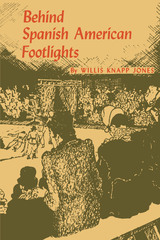 Behind Spanish American Footlights
By Willis Knapp Jones
University of Texas Press, 1966 Across a five-hundred-year sweep of history, Willis Knapp Jones surveys the native drama and the Spanish influence upon it in nineteen South American countries, and traces the development of their national theatres to the 1960s. This volume, filled with a fascinating array of information, sparkles with wit while giving the reader a fact-filled course in the history of Spanish American drama that he can get nowhere else. This is the first book in English ever to consider the theatre of all the Spanish American countries. Even in Spanish, the pioneer study that covers the whole field was also written by Jones. Jones sees the history of a nation in the history of its drama. Pre-Columbian Indians, conquistadores, missionary priests, viceroys, dictators, and national heroes form a background of true drama for the main characters here—those who wrote and produced and acted in the make-believe drama of the times. The theatre mirrors the whole life of the community, Jones believes, and thus he offers information about geography, military events, and economics, and follows the politics of state and church through dramatists’ offerings. Examining the plays of a people down the centuries, he shows how the many cultural elements of both Old and New Worlds have been blended into the distinct national characteristics of each of the Spanish American countries. He does full justice to the subject he loves. A lively storyteller, he adds tidbits of spice and laughter, long-buried vignettes of history, tales of politics and drama, stories of high and low life, plots of plays, bits of verse, accounts of dalliance and of hard work, and sad and happy endings of rulers and peons, dramatists, actors, and clowns. A valuable appendix is a selected reading guide, listing the outstanding works of important Spanish American dramatists. A generous bibliography is a useful addition for scholars.
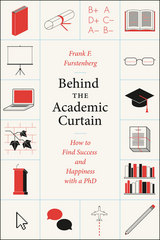 Behind the Academic Curtain: How to Find Success and Happiness with a PhD
Frank F. Furstenberg
University of Chicago Press, 2013 More people than ever are going to graduate school to seek a PhD these days. When they get there, they discover a bewildering environment: a rapid immersion in their discipline, a keen competition for resources, and uncertain options for their future, whether inside or outside of academia. Life with a PhD can begin to resemble an unsolvable maze. In Behind the Academic Curtain, Frank F. Furstenberg offers a clear and user-friendly map to this maze. Drawing on decades of experience in academia, he provides a comprehensive, empirically grounded, and, most important of all, practical guide to academic life.
While the greatest anxieties for PhD candidates and postgrads are often centered on getting that tenure-track dream job, each stage of an academic career poses a series of distinctive problems. Furstenberg divides these stages into five chapters that cover the entire trajectory of an academic life, including how to make use of a PhD outside of academia. From finding the right job to earning tenure, from managing teaching loads to conducting research, from working on committees to easing into retirement, he illuminates all the challenges and opportunities an academic can expect to encounter. Each chapter is designed for easy consultation, with copious signposts, helpful suggestions, and a bevy of questions that all academics should ask themselves throughout their career, whether at a major university, junior college, or a nonacademic organization. An honest and up-to-date portrayal of how this life really works, Behind the Academic Curtain is an essential companion for any scholar, at any stage of his or her career.
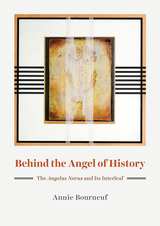 Behind the Angel of History: The "Angelus Novus" and Its Interleaf
Annie Bourneuf
University of Chicago Press, 2022 The story of artist R. H. Quaytman’s discovery of an engraving hidden behind a famous artwork by Paul Klee.
This book begins with artist R. H. Quaytman uncovering something startling about a picture by Paul Klee. Pasted beneath Klee’s 1920 Angelus Novus—famous for its role in the writings of its first owner, Walter Benjamin—Quaytman found that Klee had interleaved a nineteenth-century engraving of Martin Luther, leaving just enough visible to provoke questions.
Behind the Angel of History reveals why this hidden face matters, delving into the intertwined artistic, political, and theological issues consuming Germany in the wake of the Great War. With the Angelus Novus, Klee responded to a growing call for a new religious art. For Benjamin, Klee’s Angelus became bound up with the prospect of meaningful dialogue among religions in Germany.
Reflecting on Klee’s, Benjamin’s, and Quaytman’s strategies of superimposing conflicting images, Annie Bourneuf reveals new dimensions of complexity in this iconic work and the writing it inspired.
 Behind the Backlash: Muslim Americans After 9/11
Lori Peek
Temple University Press, 2010 As the nation tried to absorb the shock of the 9/11 attacks, Muslim Americans were caught up in an unprecedented wave of backlash violence. Public discussion revealed that widespread misunderstanding and misrepresentation of Islam persisted, despite the striking diversity of the Muslim community. Letting the voices of 140 ordinary Muslim American men and women describe their experiences, Lori Peek's path-breaking book, Behind the Backlash presents moving accounts of prejudice and exclusion. Muslims speak of being subjected to harassment before the attacks, and recount the discrimination they encountered afterwards. Peek also explains the struggles of young Muslim adults to solidify their community and define their identity during a time of national crisis. Behind the Backlash seeks to explain why blame and scapegoating occur after a catastrophe. Peek sets the twenty-first century experience of Muslim Americans, who were vilified and victimized, in the context of larger sociological and psychological processes. Peek’s book will be of interest to those in disaster research studies, sociology of religion, and race and ethnic relations.
Behind the Big House: Reconciling Slavery, Race, and Heritage in the U.S. South
Jodi Skipper
University of Iowa Press, 2022 2022 Anthropology of Tourism Interest Group Nelson Graburn Prize, winner
When residents and tourists visit sites of slavery, whose stories are told? All too often the lives of slaveowners are centered, obscuring the lives of enslaved people. Behind the Big House gives readers a candid, behind-the-scenes look at what it really takes to interpret the difficult history of slavery in the U.S. South. The book explores Jodi Skipper’s eight-year collaboration with the Behind the Big House program, a community-based model used at local historic sites to address slavery in the collective narrative of U.S. history and culture.
In laying out her experiences through an autoethnographic approach, Skipper seeks to help other activist scholars of color negotiate the nuances of place, the academic public sphere, and its ambiguous systems of reward, recognition, and evaluation.
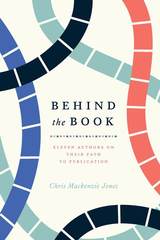 Behind the Book: Eleven Authors on Their Path to Publication
Chris Mackenzie Jones
University of Chicago Press, 2018 Every book has a story of its own, a path leading from the initial idea that sparked it to its emergence into the world in published form. No two books follow quite the same path, but all are shaped by a similar array of market forces and writing craft concerns as well as by a cast of characters stretching beyond the author.
Behind the Book explores how eleven contemporary first-time authors, in genres ranging from post-apocalyptic fiction to young adult fantasy to travel memoir, navigated these pathways with their debut works. Based on extensive interviews with the authors, it covers the process of writing and publishing a book from beginning to end, including idea generation, developing a process, building a support network, revising the manuscript, finding the right approach to publication, building awareness, and ultimately moving on to the next project. It also includes insights from editors, agents, publishers, and others who helped to bring these projects to life.
Unlike other books on writing craft, Behind the Book looks at the larger picture of how an author’s work and choices can affect the outcome of a project. The authors profiled in each story open up about their challenges, mistakes, and successes. While their paths to publication may be unique, together they offer important lessons that authors of all types can apply to their own writing journeys.
Behind the Burnt Cork Mask: Early Blackface Minstrelsy and Antebellum American Popular Culture
William J. Mahar
University of Illinois Press, 1999 The songs, dances, jokes, parodies, spoofs, and skits of blackface groups such as the Virginia Minstrels and Buckley's Serenaders became wildly popular in antebellum America. Drawing on an unprecedented archival study of playbills, newspapers, sketches, monologues, and music, William J. Mahar explores the racist practices of minstrel entertainers and considers their performances as troubled representations of ethnicity, class, gender, and culture in the nineteenth century. Mahar investigates the relationships between blackface comedy and other Western genres and traditions; between the music of minstrel shows and its European sources; and between "popular" and "elite" constructions of culture. Locating minstrel performances within their complex sites of production, Mahar reassesses the historiography of the field.
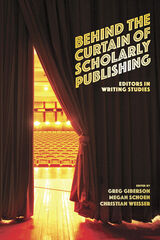 Behind the Curtain of Scholarly Publishing: Editors in Writing Studies
Greg Giberson
Utah State University Press, 2022 Until now there has been little consideration of the intellectual and historical impact editors have had on the young and ever-evolving field of writing studies. Behind the Curtain of Scholarly Publishing provides new and seasoned scholars with behind-the-scenes explorations and expositions of the history of scholarly editing and the role of the scholarly editor from the perspectives of current and former editors from important publications within the field.
Each chapter in the collection examines the unique experiences and individual contributions of its authors during their time as editors, offering advice to scholars and potential editors on how to navigate the publication process and understand editorial roles. The contributors provide multiple perspectives on the growth, transformation, and, in some cases, founding of some of the most influential publishing venues in writing studies.
The personal and historical narratives, along with the unique perspectives and insightful analyses of the individual authors in Behind the Curtain of Scholarly Publishing, offer needed transparency and context to what has historically been an opaque, yet inevitable and consequential, part of academic life. This volume will help researchers in the field understand the publishing process.
Contributors: Cheryl Ball, David Bartholomae, Charles Bazerman, Jean Ferguson Carr, Douglas Eyman, Muriel Harris, Byron Hawk, Alice Horning, Paul Kei Matsuda, Laura Micciche, Mike Palmquist, Michael Pemberton, Malea Powell, Kelly Ritter, Victor Villanueva, Victor Vitanza, Kathleen Blake Yancey
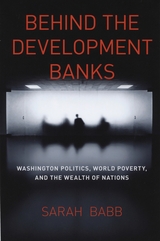 Behind the Development Banks: Washington Politics, World Poverty, and the Wealth of Nations
Sarah Babb
University of Chicago Press, 2009 The World Bank and other multilateral development banks (MDBs) carry out their mission to alleviate poverty and promote economic growth based on the advice of professional economists. But as Sarah Babb argues in Behind the Development Banks, these organizations have also been indelibly shaped by Washington politics—particularly by the legislative branch and its power of the purse. Tracing American influence on MDBs over three decades, this volume assesses increased congressional activism and the perpetual “selling” of banks to Congress by the executive branch. Babb contends that congressional reluctance to fund the MDBs has enhanced the influence of the United States on them by making credible America’s threat to abandon the banks if its policy preferences are not followed. At a time when the United States’ role in world affairs is being closely scrutinized, Behind the Development Banks will be necessary reading for anyone interested in how American politics helps determine the fate of developing countries.
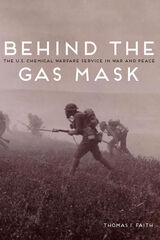 Behind the Gas Mask: The U.S. Chemical Warfare Service in War and Peace
Thomas Faith
University of Illinois Press, 2014 In Behind the Gas Mask, Thomas Faith offers an institutional history of the Chemical Warfare Service, the department tasked with improving the Army's ability to use and defend against chemical weapons during and after World War One. Taking the CWS's story from the trenches to peacetime, he explores how the CWS's work on chemical warfare continued through the 1920s despite deep opposition to the weapons in both military and civilian circles.
As Faith shows, the believers in chemical weapons staffing the CWS allied with supporters in the military, government, and private industry to lobby to add chemical warfare to the country's permanent arsenal. Their argument: poison gas represented an advanced and even humane tool in modern war, while its applications for pest control and crowd control made a chemical capacity relevant in peacetime. But conflict with those aligned against chemical warfare forced the CWS to fight for its institutional life--and ultimately led to the U.S. military's rejection of battlefield chemical weapons.
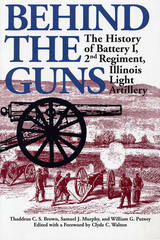 Behind the Guns: The History of Battery I, 2nd Regiment, Illinois Light Artillery
Thaddeus C. S. Brown, Samuel J. Murphy, and William G. Putney. Edited with a Foreword by Clyde C. Walton
Southern Illinois University Press, 2000 Much has been written of the infantry and the cavalry during the Civil War, but little attention has been paid the artillery. Through the battles of Chickamauga and Missionary Ridge in 1863 and the Atlanta Campaign of 1864 and with General Sherman’s forces on the famous March to the Sea, the acts of a courageous fighting group are vividly recounted in Behind the Guns: The History of Battery I, 2nd Regiment, Illinois Light Artillery. Originally published in 1965 in a limited edition, this regimental history of a light artillery unit was written by three of its soldiers, including the bugler. Battery I was formed in 1861 by Charles W. Keith of Joliet and Henry B. Plant of Peoria. More than a hundred men were mustered into service in December near Springfield and left for Cairo in February 1862. The battery trained at Camp Paine across the Ohio River in Kentucky until March, when the men were dispatched to the South. During the war, the Battery was attached to three different armies: the Army of the Mississippi, the Army of the Ohio, and the Army of the Cumberland. Clyde C. Walton’s foreword and the narrative discuss the variety of weapons used by the unit, including James, Parrott, and Rodman guns and the bronze, muzzle-loading Napoleons that fired twelve-pound projectiles. The book also includes an account of the prisoner-of-war experience of Battery I lieutenant Charles McDonald, biographical sketches of the battery soldiers, and eighteen maps and five line drawings.
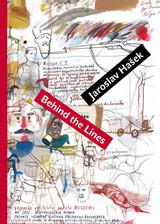 Behind the Lines: Bugulma and Other Stories
Jaroslav Hasek
Karolinum Press, 2012 Jaroslav Hašek is a Czech writer most famous for his wickedly funny, widely read, yet incomplete novel The Good Soldier Schweik, a series of absurdist vignettes about a recalcitrant WWI soldier. Hašek—in spite of a life of buffoonery and debauchery—was remarkably prolific. He wrote hundreds of short stories that all display both his extraordinary gift for satire and his profound distrust of authority. Behind the Lines presents a series of nine short stories first published in the Prague Tribune and considered to be some of Hašek’s best. Based on his experiences as a Red Commissar in the Russian Civil War and his return to Czechoslovakia, Behind the Lines focuses on the Russian town of Bugulma, taking aim, with mordant wit, at the absurdities of a revolution.
Providing important background and insight into The Good Soldier Schweik, this collection by a writer some call the Bolshevik Mark Twain is nevertheless much more than a tool for understanding his better-known novel; it is a significant work in its own right. A hidden gem remarkable for its modern, ribald sense of humor, Behind the Lines is an enjoyable, fast-paced anthology of great literary and historical value.
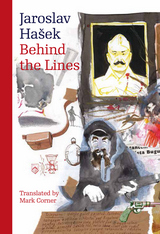 Behind the Lines: Bugulma and Other Stories
Jaroslav Hasek
Karolinum Press, 2012 Jaroslav Hašek is a Czech writer most famous for his wickedly funny, widely read, yet incomplete novel The Good Soldier Schweik, a series of absurdist vignettes about a recalcitrant WWI soldier. Hašek—in spite of a life of buffoonery and debauchery—was remarkably prolific. He wrote hundreds of short stories that all display both his extraordinary gift for satire and his profound distrust of authority. Behind the Lines presents a series of nine short stories first published in the Prague Tribune and considered to be some of Hašek’s best. Based on his experiences as a Red Commissar in the Russian Civil War and his return to Czechoslovakia, Behind the Lines focuses on the Russian town of Bugulma, taking aim, with mordant wit, at the absurdities of a revolution.
Providing important background and insight into The Good Soldier Schweik, this collection by a writer some call the Bolshevik Mark Twain is nevertheless much more than a tool for understanding his better-known novel; it is a significant work in its own right. A hidden gem remarkable for its modern, ribald sense of humor, Behind the Lines is an enjoyable, fast-paced anthology of great literary and historical value.
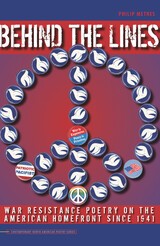 Behind the Lines: War Resistance Poetry on the American Home Front since 1941
Philip Metres
University of Iowa Press, 2007 Whether Thersites in Homer’s Iliad, Wilfred Owen in “Dulce et Decorum Est,” or Allen Ginsberg in “Wichita Vortex Sutra,” poets have long given solitary voice against the brutality of war. The hasty cancellation of the 2003 White House symposium “Poetry and the American Voice” in the face of protests by Sam Hamill and other invited guests against the coming “shock and awe” campaign in Iraq reminded us that poetry and poets still have the power to challenge the powerful.
Behind the Lines investigates American war resistance poetry from the Second World War through the Iraq wars. Rather than simply chronicling the genre, Philip Metres argues that this poetry gets to the heart of who is authorized to speak about war and how it can be represented. As such, he explores a largely neglected area of scholarship: the poet’s relationship to dissenting political movements and the nation.
In his elegant study, Metres examines the ways in which war resistance is registered not only in terms of its content but also at the level of the lyric. He proposes that protest poetry constitutes a subgenre that—by virtue of its preoccupation with politics, history, and trauma—probes the limits of American lyric poetry. Thus, war resistance poetry—and the role of what Shelley calls unacknowledged legislators—is a crucial, though largely unexamined, body of writing that stands at the center of dissident political movements.
 Behind the Mask: Destruction and Creativity in Women’s Aggression
Dana Crowley Jack
Harvard University Press, 1999 This boldly original book explores the origins, meanings, and forms of women's aggression. Drawing from in-depth interviews with sixty women of different ages and ethnic and class backgrounds--police officers, attorneys, substance abusers, homemakers, artists--Dana Jack provides a rich account of how women explain (or explain away) their own hidden or actual acts of hurt to others. With sensitivity but without sentimentality, Jack gives readers a range of compelling stories of how women channel, either positively or destructively, their own powerful force and of how they resist and retaliate in the face of others' aggression in a society that expects women to be yielding, empathetic, and supportive.
Arguing that aggression arises from failures in relationships, Jack portrays the many forms that women's aggression can take, from veiled approaches used to resist, control, and take vengeance on others, to aggression that reflects despair, to aggression that may be a hopeful sign of new strength. Throughout the book, Jack shows the positive sides of aggression as women struggle with internal and external demons, reconnect with others, and create the courage to stand their ground. This work broadens our understanding of aggression as an interpersonal phenomenon rooted in societal expectations, and offers exciting new approaches for exploring the variations of this vexing human experience.
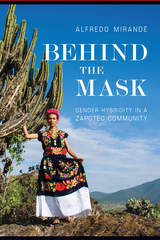 Behind the Mask: Gender Hybridity in a Zapotec Community
Alfredo Mirandé
University of Arizona Press, 2017 The image of biologically male people dancing while dressed in the traditional, colorful attire of Zapotec, Juchiteca, females stands in sharp contrast to the prevailing view of Mexico as the land of charros, machismo, and unbridled ranchero masculinity. These indigenous people are called los muxes, and they are neither man nor woman, but rather a hybrid third gender.
After seeing a video of a muxe vela, or festival, sociologist Alfredo Mirandé was intrigued by the contradiction between Mexico’s patriarchal reputation and its warm acceptance of los muxes. Seeking to get past traditional Mexican masculinity, he presents us with Behind the Mask, which combines historical analysis, ethnographic field research, and interviews conducted with los muxes of Juchitán over a period of seven years. Mirandé observed community events, attended muxe velas, and interviewed both muxes and other Juchitán residents. Prefaced by an overview of the study methods and sample, the book challenges the ideology of a male-dominated Mexican society driven by the cult of machismo, featuring photos alongside four appendixes.
Delving into many aspects of their lives and culture, the author discusses how the muxes are perceived by others, how the muxes perceive themselves, and the acceptance of a third gender status among various North American indigenous groups. Mirandé compares traditional Mexicano/Latino conceptions of gender and sexuality to modern or Western object choice configurations. He concludes by proposing a new hybrid model for rethinking these seemingly contradictory and conflicting gender systems.
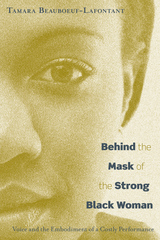 Behind the Mask of the Strong Black Woman: Voice and the Embodiment of a Costly Performance
Tamara Beauboeuf-Lafontant
Temple University Press, 2009 The defining quality of Black womanhood is strength, states Tamara Beauboeuf-Lafontant in Behind the Mask of the Strong Black Woman. But, she argues, the idea of strength undermines its real function: to defend and maintain a stratified social order by obscuring Black women’s experiences of suffering, acts of desperation, and anger. This provocative book lays bare the common perception that strength is an exemplary or defining quality of “authentic” Black womanhood.
The author, a noted sociologist, interviews 58 Black women about being strong and proud, to illustrate their “performance” of invulnerability. Beauboeuf-Lafontant explains how such behavior leads to serious symptoms for these women, many of whom suffer from eating disorders and depression.
Drawing on Black feminist scholarship, cultural studies, and women’s history, Behind the Mask of the Strong Black Woman traces the historical and social influences of normative Black femininity, looking at how notions of self-image and strength create a distraction from broader forces of discrimination and power.
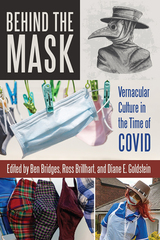 Behind the Mask: Vernacular Culture in the Time of COVID
Ben Bridges
Utah State University Press, 2023 Vernacular responses have been crucial for communities seeking creative ways to cope with the coronavirus pandemic. With most people locked down and separated from the normal ebb and flow of life for an extended period of time, COVID-19 inspired community and creativity, adaptation and flexibility, traditional knowledge, resistance, and dynamism. Removing people from assumed norms and daily lives, the pandemic provided a moment of insight into the nature of vernacular culture as it was used, abused, celebrated, critiqued, and discarded. In Behind the Mask, contributors from the USA, the UK, and Scandinavia emphasize the choices that individual people and communities made during the COVID pandemic, prioritizing the everyday lives of people enduring this health crisis.
Despite vernacular’s potential nod to dominant or external culture, it is the strong connection to the local that grounds the vernacular within the experiential context that it occupies. Exploring the nature and shape of vernacular responses to the ongoing public health crisis, Behind the Mask documents processes that are otherwise likely to be forgotten. Including different ethnographic presents, contributors capture moments during the pandemic rather than upon reflection, making the work important to students and scholars of folklore and ethnology, as well as general readers interested in the COVID pandemic.
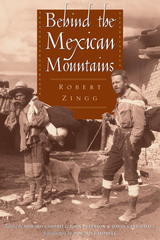 Behind the Mexican Mountains
By Robert Zingg
University of Texas Press, 2001 In 1930, anthropologists Robert Zingg and Wendell Bennett spent nine months among the Tarahumara of Chihuahua, Mexico, one of the least acculturated indigenous societies in North America. Their fieldwork resulted in The Tarahumara: An Indian Tribe of Northern Mexico (1935), a classic ethnography still familiar to anthropologists. In addition to this formal work, Zingg also penned a personal, unvarnished travelogue of his sojourn among the Tarahumara. Unpublished in his lifetime, Behind the Mexican Mountains is now available in print for the first time. This colorful account provides a compelling description of the landscape, people, traditions, language, and archaeology of the Tarahumara region. Abandoning the scientific detachment of the observer, Zingg frankly records his reactions to the people and their customs as he vividly evokes the daily experience of doing fieldwork. In the introduction, Howard Campbell examines Zingg's writing in light of current critiques of anthropology as literature. He makes a strong case that although earlier anthropological writing reveals unacceptable cultural biases, it also demonstrates the ongoing importance and vitality of field research.
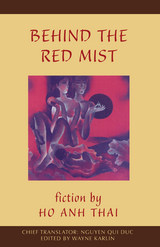 Behind the Red Mist: Short Fiction by Ho Anh Thai
Ho Anh Thai
Northwestern University Press, 1998 Behind the Red Mist gives us for the first time in English a wide range of stories from the most important writer of the post-war generation in Vietnam. The characters range from a party official who turns into a goat while watching porno movies, to an Indian who carries his mother's bones in his knapsack, to a war widow trying desperately to piece together her life through the fragments of debris she collects from her back yard. The title novella "Behind the Red Mist" is a Vietnamese "Back To the Future", a social satire in which a young man in the Hanoi of the eighties receives an electric shock and is transported back to his same apartment block in 1967 wartime Vietnam during the American bombing. He not only witnesses the war with the eyes of someone who knows its outcome, but participates in his parents' courtship and discovers some truths about the generation held up to his own as a role model.
 Behind the Scenes at Galileo's Trial: Including the First English Translation of Melchior Inchofer's Tractatus syllepticus
Richard J. Blackwell
University of Notre Dame Press, 2006
Galileo's trial in 1633 before the Roman Inquisition is one of the most frequently mentioned topics in the history of science. Galileo's encounter with the Catholic Church was not only a major turning point in the history of western culture; it is the paradigm case of the clash between the institutional authority of religion and the authority of scientific reason, a clash that has helped to define the modern era.
Blackwell's new contribution to "the Galileo affair" concerns the official theological position against Galileo. The centerpiece of his project is the treatise entitled Tractatus syllepticus, written by Melchior Inchofer, S.J., whose judgment of the orthodoxy of Galileo's Dialogue had been requested earlier by the Holy Office and was then incorporated into the proceedings of the trial. At the time, Inchofer's judgment against Galileo's book was both detailed and harsh. That judgment formed the basis for Inchofer's subsequent Tractatus, the first English translation of which is included in this volume. Inchofer's text provides a new and fascinating way of looking at the defense of the guilty verdict. Blackwell's analysis of this material greatly enriches our knowledge of Galileo and his trial.
Both legal and theological behind-the-scenes aspects of Galileo's trial are discussed. Because of a weak legal case, a plea bargain was arranged, extrajudicially, then sabotaged in the Holy Office before the final decision of the case. Through his close scrutiny of the specifics of the trial, Blackwell renders a picture that is more complex, and ominous, than the usual portrayal of the trial.
"Embedded here is a real jewel: Blackwell's powerfully illuminating and sobering portrayal of Galileo's fraught relations with the Jesuit astronomer Christopher Scheiner. I know of no other account that shows with such clarity the theological constraints that bound the Catholic protagonists in the infamous 'Galileo affair' and how behind the scenes these constraints evolved and hardened." —Owen Gingerich, Professor Emeritus, Harvard-Smithsonian Center for Astrophysics
"An original contribution to Galilean studies, Richard J. Blackwell's Behind the Scenes at Galileo's Trialis both an in-depth study of the trial and a careful and enlightening examination of the roles played by that understudied figure, Melchior Inchofer, and the famed Jesuit astronomer, Christopher Scheiner, in Galileo's condemnation. It is also a boon to have here English translations of Inchofer's Tractatus syllepticus and Jesuit works, including an excerpt from Scheiner's Prodromus." —Irving Kelter, University of St. Thomas, Houston
"This book is not the usual kind of Galileo fare. Blackwell makes no attempt to tell the whole story, but meticulously and judiciously analyzes background events, texts, and personalities in ways that illuminate and clarify the course and outcome of Galileo's campaign on behalf of heliocentrism and the trial with which it ended. Appendices include relevant texts in translation, as well as Jesuit procedural rules that played a central role in the drama. This is an outstanding contribution to Galileo scholarship." —David C. Lindberg, Hilldale Professor Emeritus of the History of Science, University of Wisconsin
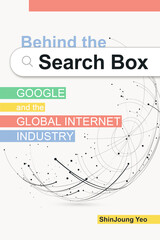 Behind the Search Box: Google and the Global Internet Industry
ShinJoung Yeo
University of Illinois Press, 2023 Once seen as a harbinger of a new enlightened capitalism, Google has become a model of robber baron rapaciousness thanks to its ruthless monetizing of private data, obsession with monopoly, and pervasive systems of labor discrimination and exploitation. Using the company as a jumping-off point, ShinJoung Yeo explores the political economy of the search engine industry against the backdrop of the relationship between information and capitalism’s developmental processes. Yeo’s critical analysis draws on in-depth discussions of essential issues like how the search engine evolved into a ubiquitous commercial service, it’s place in a global information business that is restructuring the information industry and our very social lives, who exactly designs and uses search technology, what kinds of workers labor behind the scenes, and the influence of geopolitics. An incisive look at a pervasive presence in our lives, Behind the Search Box places the search engine industry’s rise and ongoing success within an original political economy of digital capitalism.
Behind the Stars, More Stars: The Tagus/Disquiet Collection of New Luso-American Writing
Edited by Christopher Larkosh and Oona Patrick
Tagus Press, 2019 Presenting experimental and boundary-breaking prose from women, people of color, and LGBTQ writers, Behind the Stars, More Stars imagines a more diverse and inclusive Luso-American and Portuguese-American literary scene, which has traditionally been dominated by male voices. Since its first "Writing the Luso Experience" workshops were held in 2011, Dzanc Books's Disquiet International Literary Program in Lisbon has aimed to break silences within today's Luso-American communities. Disquiet faculty Katherine Vaz and Frank X. Gaspar appear alongside up-and-coming writers from the workshops, such as Traci Brimhall, Megan Fernandes, Hugo Dos Santos, and previously unpublished women writers.
 Behind the Times: Inside the New New York Times
Edwin Diamond
University of Chicago Press, 1995 An incisive examination of the world's most respected paper, Behind the Times tells the story of changing Timesian values and of a new era for the paper—a tale of editorial struggles, star columnists and critics, institutional self-importance, and the political and cultural favorites of the Times' owners and editors. Taking the reader inside the Times' newsrooms and executive offices, Diamond offers an expert, insider's appraisal of how the Times and its editors continue to shape coverage of major public events for over one million readers. Diamond goes behind the scenes to recount the paper's recent and much heralded plan to win larger audiences and hold on to its dominant position in the new media landscape of celebrity journalism and hundred-channel television.
"Edwin Diamond's Behind the Times sets the Paper of Record straight—a fascinating look at the people and policies, the dissension and debate behind the seemingly serene masthead of the New York Times. No newsroom is a Garden of Eden, and only the rare reporter wears a halo: the Times, not surprisingly, is an imperfect place. But Edwin Diamond is careful to note the triumph as well as the turmoil at this great American newspaper. The result is a window on the changing world of journalism today."—Dan Rather
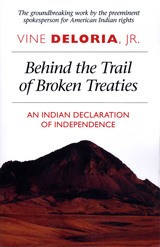 Behind the Trail of Broken Treaties: An Indian Declaration of Independence
By Vine Deloria, Jr.
University of Texas Press, 1985 Originally published in 1974, just as the Wounded Knee occupation was coming to an end, Behind the Trail of Broken Treaties raises disturbing questions about the status of American Indians within the American and international political landscapes. Analyzing the history of Indian treaty relations with the United States, Vine Deloria presents population and land ownership information to support his argument that many Indian tribes have more impressive landholdings than some small members of the United Nations. Yet American Indians are not even accorded status within the UN's trust territories recognition process. A 2000 study published by the Annual Survey of International and Comparative Law recommends that the United Nations offer membership to the Iroquois, Cherokee, Navajo, and other Indian tribes. Ironically, the study also recommends that smaller tribes band together to form a confederation to seek membership—a suggestion nearly identical to the one the United States made to the Delaware Indians in 1778—and that a presidential commission explore ways to move beyond the Doctrine of Discovery, under which European nations justified their confiscation of Indian lands. Many of these ideas appear here in this book, which predates the 2000 study by twenty-six years. Thus, Behind the Trail of Broken Treaties anticipates recent events as history comes full circle, making the book imperative reading for anyone wishing to understand the background of the movement of American Indians onto the world political stage. In the quarter century since this book was written, Indian nations have taken great strides in demonstrating their claims to recognized nationhood. Together with Tribes, Treaties, and Constitutional Tribulations, by Deloria and David E. Wilkins, Behind the Trail of Broken Treaties highlights the historical events that helped bring these changes to fruition. At the conclusion of Behind the Trail of Broken Treaties, Deloria states: "The recommendations made in the Twenty Points and the justification for such a change as articulated in the book may well come to pass in our lifetime." Now we are seeing his statement come true.
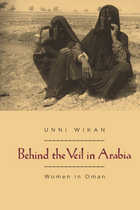 Behind the Veil in Arabia: Women in Oman
Unni Wikan
University of Chicago Press, 1991 Through photographs and detailed case histories, Unni Wikan explores the strict segregation of women, the wearing of the burqa mask, the elaborate nuptial rituals, and the graceful quality of Oman's social relations.
"Wikan does provide insights into the real position of these secluded and segregated women. . . . All this is interesting and valuable."—Ahdaf Soueif, Times Literary Supplement
"The book is detailed, insightful, and . . . engrossing. Anyone interested in the day-to-day triumphs and sorrows of women who live 'behind the veil' will want to read this account."—Arab Book World
"Wikan, a fine ethnographer, has an eye for everything that is distinctive about the culture and . . . builds up a wholly convincing picture. Above all, there is a sustained attempt to penetrate the inner lives of these strangely serene people."—Frank H. Stewart, Wilson Quarterly
"This book will certainly be of interest to all scholars concerned with sexual identity in the Islamic world."—Henry Munson, American Anthropologist
Behind the Wall: An American in East Germany, 1988-89
Paul Gleye
Southern Illinois University Press, 1991
Standing in long lines in the shops, coaxing clean laundry from an outdated washing machine, traveling despite unpredictable train schedules, and being without hot water, fruit, and vegetables through the gray winter months failed to dull Paul Gleye’s perceptions during the year he lived in Weimar, East Germany. Day by day Gleye documented his varied observations and experiences, unaware that they would prove a unique record of what would soon be an extinct society.
Gleye was in East Germany as a Fulbright lecturer. Living beyond the capital city of East Berlin and traveling and conversing freely, Gleye gained access to people and places that had been almost completely closed to Americans and other Westerners for decades.
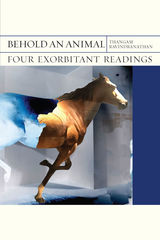 Behold an Animal: Four Exorbitant Readings
Thangam Ravindranathan
Northwestern University Press, 2019 As animals recede from our world, what tale is being told by literature’s creatures? Behold an Animal: Four Exorbitant Readings examines incongruous animals in the works of four major contemporary French writers: an airborne horse in a novel by Jean-Philippe Toussaint, extinct orangutans in Éric Chevillard, stray dogs in Marie NDiaye, vanishing (bits of) hedgehogs in Marie Darrieussecq. Resisting naturalist assumptions that an animal in a story is simply—literally or metaphorically—an animal, Thangam Ravindranathan understands it rather as the location of something missing. The animal is a lure: an unfinished figure fleeing the frame, crossing bounds of period, genre, even medium and language. Its flight traces an exorbitant (self-)portrait in which thinking admits to its commerce with life and flesh. It is in its animals, at the same time unbearably real and exquisitely unreal, that literature may today be closest to philosophy.
This book’s primary focus is the contemporary French novel and continental philosophy. In addition to Toussaint, Chevillard, NDiaye, and Darrieussecq, it engages the work of Jean de La Fontaine, Eadweard Muybridge, Edgar Allan Poe, Lewis Carroll, Samuel Beckett, and Francis Ponge.
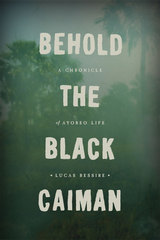 Behold the Black Caiman: A Chronicle of Ayoreo Life
Lucas Bessire
University of Chicago Press, 2014 In 2004, one of the world’s last bands of voluntarily isolated nomads left behind their ancestral life in the dwindling thorn forests of northern Paraguay, fleeing ranchers’ bulldozers. Behold the Black Caiman is Lucas Bessire’s intimate chronicle of the journey of this small group of Ayoreo people, the terrifying new world they now face, and the precarious lives they are piecing together against the backdrop of soul-collecting missionaries, humanitarian NGOs, late liberal economic policies, and the highest deforestation rate in the world.
Drawing on ten years of fieldwork, Bessire highlights the stark disconnect between the desperate conditions of Ayoreo life for those out of the forest and the well-funded global efforts to preserve those Ayoreo still living in it. By showing how this disconnect reverberates within Ayoreo bodies and minds, his reflexive account takes aim at the devastating consequences of our society’s continued obsession with the primitive and raises important questions about anthropology’s potent capacity to further or impede indigenous struggles for sovereignty. The result is a timely update to the classic literary ethnographies of South America, a sustained critique of the so-called ontological turn—one of anthropology’s hottest trends—and, above all, an urgent call for scholars and activists alike to rethink their notions of difference.
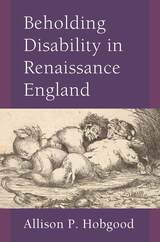 Beholding Disability in Renaissance England
Allison P. Hobgood
University of Michigan Press, 2021 Human variation has always existed, though it has been conceived of and responded to variably. Beholding Disability in Renaissance England interprets sixteenth- and seventeenth-century literature to explore the fraught distinctiveness of human bodyminds and the deliberate ways they were constructed in early modernity as able, and not. Hobgood examines early modern disability, ableism, and disability gain, purposefully employing these contemporary concepts to make clear how disability has historically been disavowed—and avowed too. Thus, this book models how modern ideas and terms make the weight of the past more visible as it marks the present, and cultivates dialogue in which early modern and contemporary theoretical models are mutually informative.
Beholding Disability also uncovers crucial counterdiscourses circulating in the English Renaissance that opposed cultural fantasies of ability and had a keen sensibility toward non-normative embodiments. Hobgood reads impairments as varied as epilepsy, stuttering, disfigurement, deafness, chronic pain, blindness, and castration in order to understand not just powerful fictions of ability present during the Renaissance but also the somewhat paradoxical, surprising ways these ableist ideals provided creative fodder for many Renaissance writers and thinkers. Ultimately, Beholding Disability asks us to reconsider what we think we know about being human both in early modernity, and today.
Be-Hooved
Mar Ka
University of Alaska Press, 2019 Mar Ka lives in and writes from the foothills of Alaska’s Chugach Mountains. Be-Hooved, her new poetry collection, creates a layered spiritual memoir of her decades in the northern wilderness. The poems inhabit her surroundings—structured along the seasons and the migration patterns of the Porcupine Caribou Herd—and are wrought with a fine and luminous language.
Entrancing, profound, and startling, this book is a testament to hope before change, persistence before confusion, and empathy before difference: all the world’s light and all the world’s dark / can fit into an eye into a heart.
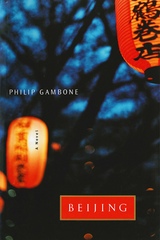 Beijing: A Novel
Philip Gambone
University of Wisconsin Press, 2003 Escaping his ghosts, AIDS widower David Masiello accepts a one-year position at a Western medical clinic in Beijing. Lonely but excited, he sets out to explore the city—both its bustling street life and its clandestine gay subculture.
David chronicles his adventures in China as he wrestles with cultural dislocation, loneliness, and sexual and spiritual longing. After a series of both comic and poignant encounters with gay Chinese men, he meets Bosheng, a handsome young artist. Though the attraction is strong, a difficult courtship ensues, during which Bosheng returns to his ancestral village to marry the girl his parents have chosen for him. Eventually, and quite unexpectedly, David and Bosheng reconnect and share an idyllic spring together. As the year ends, David must decide whether to say goodbye or face the uncertainties of a long-distance relationship.
Gambone’s novel is peopled with a host of wonderfully memorable characters: Owen, David’s forthright best friend back home; Auntie Chen, the clinic’s office mom, who wants to fix David up with a girlfriend; Stewart, David’s Beijing roommate, a graduate student doing research on Peking opera; Jiantao and Guoyang, two lovers who lecture David on the fleeting quality of American romance; and Tyson, the Australian doctor with a Chinese girlfriend, who hopes to teach David that love doesn’t need any explanations or justifications.
Beijing Film Academy Yearbook: 2015
Edited by the Journal of Beijing Film Academy
Intellect Books, 2016 The Beijing Film Academy (BFA) is one of the most revered film institutions in the world. Since 1984, the BFA’s Department of Film Studies has been publishing the Journal of the Beijing Film Academy, the only journal of film theory that integrates film education in higher learning with film theory studies. Now, coinciding with dramatically increased interest in Chinese cinema, comes the Beijing Film Academy Yearbook, showcasing the best academic debates, discussions, and research from the academy in 2015—all available for the first time in English. Aimed at narrowing the cultural gap for cross-cultural research, the book contributes not only to scholarly work on Chinese cinema, but also to film and media studies more generally.
Beijing Film Academy Yearbook 2016
Edited by the Journal of Beijing Film Academy
Intellect Books, 2017 The Beijing Film Academy Yearbook is a collection of specially selected articles chosen from issues of the Journal of Beijing Film Academy. This volume collates articles published in the journal throughout 2016, and are translated for an English-speaking readership. Due to the increased academic focus on Chinese cinema, the Beijing Film Academy Yearbook project aims to contribute to this research with a first-hand perspective in order to narrow the gap for cross-cultural scholarly dialogue.
Beijing Film Academy Yearbook 2017
Edited by Journal of Beijing Film Academy
Intellect Books, 2018 The annual Beijing Film Academy Yearbook continues to showcase the best academic debates, discussions, and research published in the prestigious Journal of Beijing Film Academy from the previous year. This volume brings together specially selected articles, covering the most up-to-date topics in Chinese cinema studies appearing for the first time in English, in order to bridge the gap in cross-cultural research in cinema and media studies, as well as to encourage new conversations.
 Beijing Film Academy Yearbook 2018
Edited by The Journal of Beijing Film Academy
Intellect Books, 2020 The annual Beijing Film Academy Yearbook continues to showcase the best academic debates, discussions, and research published in the prestigious Journal of Beijing Film Academy from the previous year. This volume brings together specially selected articles, covering the most up-to-date topics in Chinese cinema studies appearing for the first time in English, in order to bridge the gap in cross-cultural research in cinema and media studies, as well as to encourage new conversations.
This book is the latest offering in Intellect China Library series, which publishes work by Chinese scholars that have not previously been available to English-language academia. Covering the subjects of film studies, visual arts, performing arts, media, and cultural studies, the series aims to foster intellectual debate and to promote closer cross-cultural intellectual exchanges by introducing important works of Chinese scholarship to readers.
 Beijing Film Academy Yearbook 2019
Edited by the Journal of Beijing Film Academy
Intellect Books, 2022 The year’s best in Chinese cinema studies, published in English for the first time.
The annual Beijing Film Academy Yearbook continues to showcase the best academic debates, discussions, and research published in the prestigious Journal of Beijing Film Academy from the previous year. This volume brings together specially selected articles, appearing for the first time in English, to bridge the gap in cross-cultural research in cinema and media studies.
This book is the latest offering in the Intellect China Library series, which publishes work by Chinese scholars that have not previously been available to English-language academia. Covering the subjects of film studies, visual arts, performing arts, media, and cultural studies, the series aims to foster intellectual debate and promote closer cross-cultural intellectual exchanges by introducing important works of Chinese scholarship to readers.
 Beijing Film Academy Yearbook 2020
Edited by the Journal o Beijing Film Academy
Intellect Books, 2022 The year’s best in Chinese cinema studies, published in English for the first time.
The annual Beijing Film Academy Yearbook continues to showcase the best academic debates, discussions, and research published in the prestigious Journal of Beijing Film Academy from the previous year. This volume brings together specially selected articles, appearing for the first time in English, to bridge the gap in cross-cultural research in cinema and media studies.
This book is the latest offering in the Intellect China Library series, which publishes work by Chinese scholars that have not previously been available to English-language academia. Covering the subjects of film studies, visual arts, performing arts, media, and cultural studies, the series aims to foster intellectual debate and promote closer cross-cultural intellectual exchanges by introducing important works of Chinese scholarship to readers.
Beijing Film Academy Yearbook 2021
Edited by the Journal of Beijing Film Academy
Intellect Books, 2024 A collection of publications from the Journal of Beijing Film Academy.
The annual Beijing Film Academy Yearbook highlights the best academic debates, discussions, and research from the previous year, as previously published in the highly prestigious Journal of Beijing Film Academy. This volume brings together specially selected articles, appearing for the first time in English, to bridge the gap in cross-cultural research in cinema and media studies.
The book is the latest in the Intellect China Library series to produce work by Chinese scholars that have not previously been available to English-language academia. Covering the subjects of film studies, visual arts, performing arts, and media and cultural studies, the series aims to foster intellectual debate and to promote closer cross-cultural intellectual exchanges by introducing important works of Chinese scholarship to readers.
 Beijing Film Academy Yearbook 2022
Edited by the Journal of Beijing Film Academy
Intellect Books, 2025 Discover the academic perspectives shaping China’s evolving film and media industries, curated from the country’s foremost film journal.
Beijing Film Academy 2022 offers an essential collection of the most thought-provoking debates, discussions, and research from China’s leading institution for film and media studies. For the first time in English, this volume presents carefully selected articles from the prestigious Journal of Beijing Film Academy, providing scholars and students with unparalleled access to a significant body of work from Chinese academics.
This book covers a wide range of topics–from film studies and visual arts to performing arts and media culture and provides critical insights into contemporary cinematic and media discourse in China. As part of the Intellect China Library series, it fosters cross-cultural intellectual exchange and bridges the gap between Chinese scholarship and global academia.
An indispensable resource for film and media scholars, this yearbook serves as a vital tool for understanding the evolving landscape of Chinese cinema and its global impact.
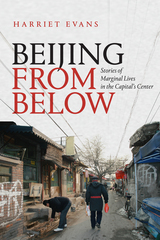 Beijing from Below: Stories of Marginal Lives in the Capital's Center
Harriet Evans
Duke University Press, 2020 Between the early 1950s and the accelerated demolition and construction of Beijing's “old city” in preparation for the 2008 Olympics, the residents of Dashalar—one of the capital city's poorest neighborhoods and only a stone's throw from Tian’anmen Square—lived in dilapidated conditions without sanitation. Few had stable employment. Today, most of Dashalar's original inhabitants have been relocated, displaced by gentrification. In Beijing from Below Harriet Evans captures the last gasps of subaltern life in Dashalar. Drawing on oral histories that reveal memories and experiences of several neighborhood families, she reflects on the relationships between individual, family, neighborhood, and the state; poverty and precarity; gender politics and ethical living; and resistance to and accommodation of party-state authority. Evans contends that residents' assertion of belonging to their neighborhood signifies not a nostalgic clinging to the past, but a rejection of their marginalization and a desire for recognition. Foregrounding the experiences of the last of Dashalar's older denizens as key to understanding Beijing's recent history, Evans complicates official narratives of China's economic success while raising crucial questions about the place of the subaltern in history.
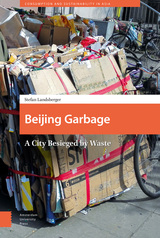 Beijing Garbage: A City Besieged by Waste
Stefan Landsberger
Amsterdam University Press, 2019 Why do central and local government initiatives aiming to curb the proliferation of garbage in Beijing and its disposal continue to be unsuccessful? Is the Uberization of waste picking through online-to-offline (O2O) garbage retrieval companies able to decrease waste and improve the lives of waste pickers? Most citizens of Beijing are well aware of the fact that their city is besieged by waste. Yet instead of taking individual action, they sit and wait for the governments at various levels to tell them what to do. And even if/when they adopt a proactive position, this does not last. Official education drives targeting the consumers are organized regularly and with modest success, but real solutions are not forthcoming. Various environmental non-governmental organizations are at work to raise the level of consciousness of the population, to change individual attitudes towards wasteful behavior, but seemingly with little overall effects.
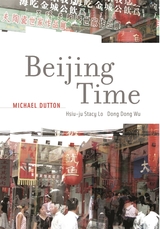 Beijing Time
Michael Dutton, Hsiu-ju Stacy Lo, and Dong Dong Wu
Harvard University Press, 2008 “Where is the market?” inquires the tourist one dark, chilly morning. “Follow the ghosts,” responds the taxi driver, indicating a shadowy parade of overloaded tricycles. “It’s not called the ghost market for nothing!” And indeed, Beijing is nothing if not haunted. Among the soaring skyscrapers, choking exhaust fumes, nonstop traffic jams, and towering monuments, one discovers old Beijing—newly styled, perhaps, but no less present and powerful than in its ancient incarnation. Beijing Time conducts us into this mysterious world, at once familiar and yet alien to the outsider.
The ancient Chinese understood the world as enchanted, its shapes revealing the mythological order of the universe. In the structure and detail of Tian’anmen Square, the authors reveal the city as a whole. In Beijing no pyramids stand as proud remnants of the past; instead, the entire city symbolizes a vibrant civilization. From Tian’anmen Square, we proceed to the neighborhoods for a glimpse of local color—from the granny and the young police officer to the rag picker and the flower vendor. Wandering from the avant-garde art market to the clock towers, from the Monumental Axis to Mao’s Mausoleum, the book allows us to peer into the lives of Beijingers, the rules and rituals that govern their reality, and the mythologies that furnish their dreams. Deeply immersed in the culture, everyday and otherworldly, this anthropological tour, from ancient cosmology to Communist kitsch, allows us to see as never before how the people of Beijing—and China—work and live.
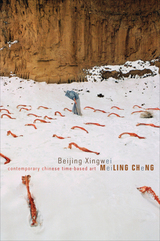 Beijing Xingwei: Contemporary Chinese Time-based Art
Meiling Cheng
Seagull Books, 2013 From cannibalism to light-calligraphy, from self-harming to animal sacrifice, from meat entwined with sex toys to a commodity-embedded ice wall, the idiosyncratic output of Chinese time-based art over the past twenty-five years has invigorated contemporary global art movements and conversation. In Beijing Xingwei, Meiling Cheng engages with such artworks created to mark China's rapid social, economical, cultural, intellectual, and environmental transformations in its post-Deng era. Beijing Xingwei—itself a critical artwork with text and images unfolding through the author’s experiences with the mutable medium—contemplates the conundrum of creating site-specific ephemeral and performance-based artworks for global consumption. Here, Cheng shows us how art can reflect, construct, confound, and enrich us. And at a moment when time is explicitly linked with speed and profit, Beijing Xingwei provides multiple alternative possibilities for how people with imagination can spend, recycle, and invent their own time.
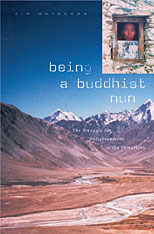 Being a Buddhist Nun: The Struggle for Enlightenment in the Himalayas
Kim Gutschow
Harvard University Press, 2004 They may shave their heads, don simple robes, and renounce materialism and worldly desires. But the women seeking enlightenment in a Buddhist nunnery high in the folds of Himalayan Kashmir invariably find themselves subject to the tyrannies of subsistence, subordination, and sexuality. Ultimately, Buddhist monasticism reflects the very world it is supposed to renounce. Butter and barley prove to be as critical to monastic life as merit and meditation. Kim Gutschow lived for more than three years among these women, collecting their stories, observing their ways, studying their lives. Her book offers the first ethnography of Tibetan Buddhist society from the perspective of its nuns.
Gutschow depicts a gender hierarchy where nuns serve and monks direct, where monks bless the fields and kitchens while nuns toil in them. Monasteries may retain historical endowments and significant political and social power, yet global flows of capitalism, tourism, and feminism have begun to erode the balance of power between monks and nuns. Despite the obstacles of being considered impure and inferior, nuns engage in everyday forms of resistance to pursue their ascetic and personal goals.
A richly textured picture of the little known culture of a Buddhist nunnery, the book offers moving narratives of nuns struggling with the Buddhist discipline of detachment. Its analysis of the way in which gender and sexuality construct ritual and social power provides valuable insight into the relationship between women and religion in South Asia today.
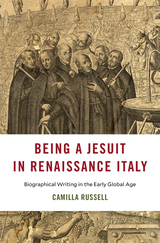 Being a Jesuit in Renaissance Italy: Biographical Writing in the Early Global Age
Camilla Russell
Harvard University Press, 2022 A new history illuminates the Society of Jesus in its first century from the perspective of those who knew it best: the early Jesuits themselves.
The Society of Jesus was established in 1540. In the century that followed, thousands sought to become Jesuits and pursue vocations in religious service, teaching, and missions. Drawing on scores of unpublished biographical documents housed at the Roman Jesuit Archive, Camilla Russell illuminates the lives of those who joined the Society, building together a religious and cultural presence that remains influential the world over.
Tracing Jesuit life from the Italian provinces to distant missions, Russell sheds new light on the impact and inner workings of the Society. The documentary record reveals a textual network among individual members, inspired by Ignatius of Loyola’s Spiritual Exercises. The early Jesuits took stock of both quotidian and spiritual experiences in their own records, which reflect a community where the worldly and divine overlapped. Echoing the Society’s foundational writings, members believed that each Jesuit’s personal strengths and inclinations offered a unique contribution to the whole—an attitude that helps explain the Society’s widespread appeal from its first days.
Focusing on the Jesuits’ own words, Being a Jesuit in Renaissance Italy offers a new lens on the history of spirituality, identity, and global exchange in the Renaissance. What emerges is a kind of genetic code—a thread connecting the key Jesuit works to the first generations of Jesuits and the Society of Jesus as it exists today.
 Being a Minor Writer
Gail Gilliland
University of Iowa Press, 1994 There are countless theoretical arguments that attempt to define “major” and “minor” literatures, but this lively and deeply felt work is one of the first to speak from the authority of the experience of being minor—of being the “minor writer” who, according to the definition of “author” given by Michel Foucault, does not possess a “name.” This book, then, is an impassioned critical and ethical defense of the act of writing for purposes other than critical acclaim. In the tradition of Horace's Ars Poetica, Gilliland uses comments by a broad range of writers, as well as her own experience as a minor woman writer, to consider the basic Horatian questions of purpose, choice of subject matter and genre, diction, characterization, setting, and style. She points out that in the absence of major recognition, the minor writer is continually confronted by the existential question, why do I (still) write? This book offers not only a challenge to existing critical theories but an argument in favor of being—for still being, for continuing anyway with one's life and art
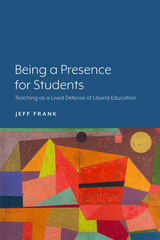 Being a Presence for Students: Teaching as a Lived Defense of Liberal Education
Jeff Frank
Lever Press, 2019 This book offers a lived defense of liberal education. How does a college professor, on a daily basis, help students feel the value of liberal education and get the most from that education? We answer this question, as professors, each day in the classroom. John William Miller, a philosophy professor at Williams College from 1924-1960 and someone noted for his exceptional teaching, developed one form that this lived defense can take. Though Miller published very little while he was alive, the archives at Williams College hold unpublished notes and essays of this master teacher. In this book, Jeff Frank offers an extended commentary on one of these unpublished essays where Miller develops his thinking on liberal education. Frank refines the idea that presence is central to liberal education and offers suggestions for how professors can become an educative presence for students. The goal of this book is an invitation to other professors who value liberal education to think with Miller about how to foster their own lived defense of liberal education, each day, in their own classrooms. The tone of the book is meant to be invitational, at times even conversational, and the book concludes with some direct suggestions for how professors can live their own defense of liberal education.
Being a Scholar in the Digital Era: Transforming Scholarly Practice for the Public Good
Jessie Daniels and Polly Thistlethwaite
Bristol University Press, 2016 What opportunities, rather than disruptions, do digital technologies present? How do developments in digital media not only support scholarship and teaching but also further social justice? Written by two experts in the field, this accessible book offers practical guidance, examples, and reflection on this changing foundation of scholarly practice. It is the first to consider how new technologies can connect academics, journalists, and activists in ways that foster transformation on issues of social justice. Discussing digital innovations in higher education as well as what these changes mean in an age of austerity, this book provides both a vision of what scholars can be in the digital era and a road map to how they can enliven the public good.
 Being a Skull: Site, Contact, Thought, Sculpture
Georges Didi-Huberman
University of Minnesota Press, 2016 What would a sculpture look like that has as its task to touch thought? For the French philosopher and Art Historian, Georges Didi-Huberman, this is the central question that permeates throughout the work of Italian artist Giuseppe Penone. Through a careful study of Penone’s work regarding a sculptural and haptic process of contact with place, thought, and artistic practice, Didi-Huberman takes the reader on a journey through various modes of thinking by way of being. Taking Penone’s artwork “Being the river” as a thematic starting point, Didi-Huberman sketches a sweeping view of how artists through the centuries have worked with conceptions of the skull, that is, the mind, and ruminates on where thought is indeed located. From Leonardo da Vinci to Albrecht Dürer, Didi-Huberman guides us to the work of Penone and from there, into the attempts of a sculptor whose works strives to touch thought. What we uncover is a sculptor whose work becomes a series of traces of the site of thought. Attempting to trace, by way of a series of frottages, reports, and developments, this imperceptible zone of contact. The result is a kind of fossil of the brain: the site of thought, namely, the site for getting lost and for disproving space. Sculpting at the same time what inhabits as well as what incorporates us.
Being a Slave: Histories and Legacies of European Slavery in the Indian Ocean
Edited by Alicia Schrikker and Nira Wickramasinghe
Leiden University Press, 2020 This multidisciplinary volume brings together scholars and writers who try to come to terms with the histories and legacies of European slavery in the Indian Ocean. The volume discusses a variety of qualitative data on the experience of being a slave in order to recover ordinary lives and, crucially, to place this experience in its Asian local context. Building on the rich scholarship on the slave trade, this volume offers a unique perspective that embraces the origin and afterlife of enslavement as well as the imaginaries and representations of slaves rather than the trade in slaves itself.
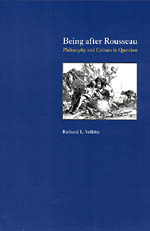 Being after Rousseau: Philosophy and Culture in Question
Richard L. Velkley
University of Chicago Press, 2002 In Being after Rousseau, Richard L. Velkley presents Jean-Jacques Rousseau as the founder of a modern European tradition of reflection on the relation of philosophy to culture—a reflection that calls both into question. Tracing this tradition from Rousseau to Immanuel Kant, Friedrich Schelling, and Martin Heidegger, Velkley shows late modern philosophy as a series of ultimately unsuccessful attempts to resolve the dichotomies between nature and society, culture and civilization, and philosophy and society that Rousseau brought to the fore.
The Rousseauian tradition begins, for Velkley, with Rousseau's criticism of modern political philosophy. Although the German Idealists such as Schelling accepted much of Rousseau's critique, they believed, unlike Rousseau, that human wholeness could be attained at the level of society and history. Heidegger and Nietzsche questioned this claim, but followed both Rousseau and the Idealists in their vision of the philosopher-poet striving to recover an original wholeness that the history of reason has distorted.
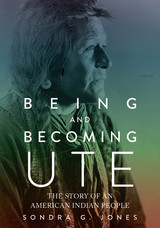 Being and Becoming Ute: The Story of an American Indian People
Sondra G. Jones
University of Utah Press, 2019 Sondra Jones traces the metamorphosis of the Ute people from a society of small, interrelated bands of mobile hunter-gatherers to sovereign, dependent nations—modern tribes who run extensive business enterprises and government services. Weaving together the history of all Ute groups—in Colorado, Utah, and New Mexico—the narrative describes their traditional culture, including the many facets that have continued to define them as a people. Jones emphasizes how the Utes adapted over four centuries and details events, conflicts, trade, and social interactions with non-Utes and non-Indians. Being and Becoming Ute examines the effects of boarding—and public—school education; colonial wars and commerce with Hispanic and American settlers; modern world wars and other international conflicts; battles over federally instigated termination, tribal identity, and membership; and the development of economic enterprises and political power. The book also explores the concerns of the modern Ute world, including social and medical issues, transformed religion, and the fight to maintain Ute identity in the twenty-first century.
Neither a portrait of a people frozen in a past time and place nor a tragedy in which vanishing Indians sank into oppressed oblivion, the history of the Ute people is dynamic and evolving. While it includes misfortune, injustice, and struggle, it reveals the adaptability and resilience of an American Indian people.
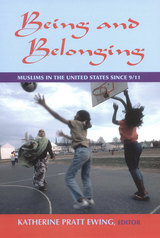 Being and Belonging: Muslims in the United States since 9/11
Katherine Pratt Ewing
Russell Sage Foundation, 2008 The terrorist attacks of September 11, 2001, instantly transformed many ordinary Muslim and Arab Americans into suspected terrorists. In the weeks and months following the attacks, Muslims in the United States faced a frighteningly altered social climate consisting of heightened surveillance, interrogation, and harassment. In the long run, however, the backlash has been more complicated. In Being and Belonging, Katherine Pratt Ewing leads a group of anthropologists, sociologists, and cultural studies experts in exploring how the events of September 11th have affected the quest for belonging and identity among Muslims in America—for better and for worse. From Chicago to Detroit to San Francisco, Being and Belonging takes readers on an extensive tour of Muslim America—inside mosques, through high school hallways, and along inner city streets. Jen'nan Ghazal Read compares the experiences of Arab Muslims and Arab Christians in Houston and finds that the events of 9/11 created a "cultural wedge" dividing Arab Americans along religious lines. While Arab Christians highlighted their religious affiliation as a means of distancing themselves from the perceived terrorist sympathies of Islam, Muslims quickly found that their religious affiliation served as a barrier, rather than a bridge, to social and political integration. Katherine Pratt Ewing and Marguerite Hoyler document the way South Asian Muslim youth in Raleigh, North Carolina, actively contested the prevailing notion that one cannot be both Muslim and American by asserting their religious identities more powerfully than they might have before the terrorist acts, while still identifying themselves as fully American. Sally Howell and Amaney Jamal distinguish between national and local responses to terrorism. In striking contrast to the erosion of civil rights, ethnic profiling, and surveillance set into motion by the federal government, well-established Muslim community leaders in Detroit used their influence in law enforcement, media, and social services to empower the community and protect civil rights. Craig Joseph and Barnaby Riedel analyze how an Islamic private school in Chicago responded to both September 11 and the increasing ethnic diversity of its student body by adopting a secular character education program to instruct children in universal values rather than religious doctrine. In a series of poignant interviews, the school's students articulate a clear understanding that while 9/11 left deep wounds on their community, it also created a valuable opportunity to teach the nation about Islam. The rich ethnographies in this volume link 9/11 and its effects to the experiences of a group that was struggling to be included in the American mainstream long before that fateful day. Many Muslim communities never had a chance to tell their stories after September 11. In Being and Belonging, they get that chance.
Being and God: A Systematic Approach in Confrontation with Martin Heidegger, Emmanuel Levinas, and Jean-Luc Marion
Lorenz B. Puntel and Alan White
Northwestern University Press, 2011 Being and God argues that defensible philosophical theorization concerning the topic “God” is both possible and necessary within the framework of an adequate systematic philosophy—which must include a theory of Being—but is not possible in the absence of such a framework. The book provides critiques of philosophical approaches to this topic that have not relied on such frameworks; targets include the most important and influential treatments presented by historical, contemporary analytic, and contemporary continental philosophers. The book also further develops the systematic framework presented in Puntel’s Structure and Being (2008), extending a line of argumentation to show that the absolutely necessary dimension of Being is, when more fully explicated, appropriately named “God.”
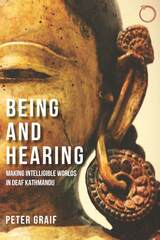 Being and Hearing: Making Intelligible Worlds in Deaf Kathmandu
Peter Graif
HAU, 2018 How do deaf people in different societies perceive and conceive the world around them? Drawing on three years of anthropological fieldwork in Nepali deaf communities, Being and Hearing shows how questions of cultural difference are profoundly shaped by local habits of perception. Beginning with the premise that philosophy and cultural intuition are separated only by genre and pedigree, Peter Graif argues that Nepali deaf communities—in their social sensibilities, political projects, and aesthetics of expression—present innovative answers to the very old question of what it means to be different.
From pranks and protests, to diverse acts of love and resistance, to renewed distinctions between material and immaterial, deaf communities in Nepal have crafted ways to foreground the habits of perception that shape both their own experiences and how they are experienced by the hearing people around them. By exploring these often overlooked strategies, Being and Hearing makes a unique contribution to ethnography and comparative philosophy.
Being and Predication
Ralph M. McInerny
Catholic University of America Press, 2018 Brings together articles that influenced the scholarly work of Ralph McInerny.
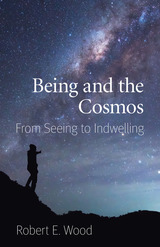 Being and the Cosmos
Robert E. Wood
Catholic University of America Press, 2018 Robert Wood’s aim in Being and the Cosmos<\i> is to reestablish a speculative view of the cosmos that goes back to the ancient Greeks and that corresponds to the holism of contemporary physics. There are two sets of problems in contemporary thought that militate against any such attempt. Most widespread is scientific reductionism in biology and neuroscience that explains awareness in terms of the mechanisms that underlie it. The second is the widespread attack in philosophy itself on speculative holism by deconstruction and anti-foundationalism.
In Being and the Cosmos<\i>, the tack against both is to make explicit the character of the mind that sees and thinks, that actively takes up commitment to the truth available in the disciplines involved. The basic ground of this position rests upon the functioning of the notion of Being that opens up the question of the character of the Whole and the human being’s place in it. Thus position the treatment of the notion of Being as foundation and as orientation toward the Whole between the attack on reductionism and on deconstruction and anti-foundationalism. Wood concludes with a multidimensional sketch of an evolutionary view of the cosmos whose initial phases contain the potentialities for life, sensibility, and intellect as cosmic telos. The holism of contemporary physics has to be reconfigured in terms of this observation. Both reductionists and dualists should know that matter itself has to be re-minded and that mind itself matters.
 Being as Symbol: On the Origins and Development of Karl Rahner's Metaphysics
Stephen M. Fields, SJ
Georgetown University Press, 2000 One of the most important theologians of the modern era, Karl Rahner is best known for his efforts to make Christianity credible in light of the intellectual questions of modern culture. Stephen M. Fields, SJ, now explains how Rahner developed his metaphysics as a creative synthesis of Thomism and the modern philosophical tradition. Focusing on Rahner's core concept of the Realsymbol, which posits all beings as symbolic, Fields establishes the place of the Realsymbol in philosophical theories of the symbol. He particularly concentrates on those key aspects of Rahner's metaphysics-his theories of finite realities and language—that have received insufficient attention. By examining a wide range of Rahner's works in the context of twelve medieval, modern, and contemporary thinkers, Fields locates the origins of this seminal thinker's metaphysics to an extent never before attempted. He notes the correlations that exist between the Realsymbol and such work as Aquinas's theory of the sacraments, Goethe's and Hegel's dialectics, Moehler's view of religious language, and Heidegger's aesthetics. Through this analysis, Fields reveals the structural core of Rahner's metaphysics and shows how art, language, knowledge, religious truth, and reality in general are all symbolic. Being as Symbol opens new perspectives on this important thinker and positions him in the broader spectrum of philosophical thought.
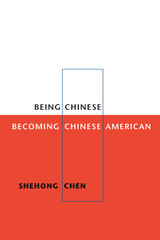 Being Chinese, Becoming Chinese American
Shehong Chen
University of Illinois Press, 2002 The 1911 revolution in China sparked debates that politicized and divided Chinese communities in the United States. People in these communities affirmed traditional Chinese values and expressed their visions of a modern China, while nationalist feelings emboldened them to stand up for their rights as an integral part of American society. When Japan threatened the China's young republic, the Chinese response in the United States revealed the limits of Chinese nationalism and the emergence of a Chinese American identity. Shehong Chen investigates how Chinese immigrants to the United States transformed themselves into Chinese Americans during the crucial period between 1911 and 1927. Chen focuses on four essential elements of a distinct Chinese American identity: support for republicanism over the restoration of monarchy; a wish to preserve Confucianism and traditional Chinese culture; support for Christianity, despite a strong anti-Christian movement in China; and opposition to the Nationalist party's alliance with the Soviet Union and cooperation with the Chinese Communist Party. Sensitive and enlightening, Being Chinese, Becoming Chinese American documents how Chinese immigrants survived exclusion and discrimination, envisioned and maintained Chineseness, and adapted to American society.
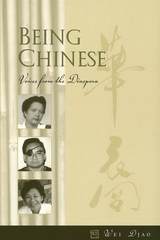 Being Chinese: Voices from the Diaspora
Wei (Angela) Djao
University of Arizona Press, 2003 Chinese have traveled the globe for centuries, and today people of Chinese ancestry live all over the world. They are the Huayi or "Chinese overseas" and can be found not only in the thriving Chinese communities of the United States, Canada, and Southeast, but also in enclaves as far-reaching as Cuba, Zimbabwe, and Peru. In this book, twenty-two Chinese living and working outside of China—ordinary people from all walks of life—tell us something about their lives and about what it means to be Chinese in non-Chinese societies. In these pages we meet a surgeon raised in Singapore but westernized in London who still believes in the value of Chinese medicine, which "revitalizes you in ways that Western medicine cannot understand." A member of the Chinese Canadian community who bridles at the insistence that you can't be Chinese unless you speak a Chinese dialect, because "Even though I do not have the Chinese language, I think my ability to manifest many things in Chinese culture to others in English is still very important." Individuals all loyal to their countries of citizenship who continue to observe the customs of their ancestral home to varying degrees, whether performing rites in memory of ancestors, practicing fengshui, wearing jade for good luck, or giving out red packets of lucky money for New Year. What emerges from many of these accounts is a selective adherence to Chinese values. One person cites a high regard for elders, for high achievement, and for the sense of togetherness fostered by his culture. Another, the bride in an arranged marriage to a transplanted Chinese man, speaks highly of her relationship: "It's the Chinese way to put in the effort and persevere." Several of the stories consider the difference between how Chinese women overseas actually live and the stereotypes of how they ought to live. One writes: "Coming from a traditional Chinese family, which placed value on sons and not on daughters, it was necessary for me to assert my own direction in life rather than to follow in the traditional paths of obedience." Bracketing the testimonies are an overview of the history of emigration from China and an assessment of the extent to which the Chinese overseas retain elements of Chinese culture in their lives. In compiling these personal accounts, Wei Djao, who was born in China and now lives near Seattle, undertook a quest that took her not only to many countries but also to the inner landscapes of the heart. Being Chinese is a highly personal book that bares the aspirations, despairs, and triumphs of real people as it makes an insightful and lasting contribution to Chinese diasporic studies.
 Being Colonized: The Kuba Experience in Rural Congo, 1880–1960
Jan Vansina
University of Wisconsin Press, 2010 What was it like to be colonized by foreigners? Highlighting a region in central Congo, in the center of sub-Saharan Africa, Being Colonized places Africans at the heart of the story. In a richly textured history that will appeal to general readers and students as well as to scholars, the distinguished historian Jan Vansina offers not just accounts of colonial administrators, missionaries, and traders, but the varied voices of a colonized people. Vansina uncovers the history revealed in local news, customs, gossip, and even dreams, as related by African villagers through archival documents, material culture, and oral interviews.
Vansina’s case study of the colonial experience is the realm of Kuba, a kingdom in Congo about the size of New Jersey—and two-thirds the size of its colonial master, Belgium. The experience of its inhabitants is the story of colonialism, from its earliest manifestations to its tumultuous end. What happened in Kuba happened to varying degrees throughout Africa and other colonized regions: racism, economic exploitation, indirect rule, Christian conversion, modernization, disease and healing, and transformations in gender relations. The Kuba, like others, took their own active part in history, responding to the changes and calamities that colonization set in motion. Vansina follows the region’s inhabitants from the late nineteenth century to the middle of the twentieth century, when a new elite emerged on the eve of Congo’s dramatic passage to independence.
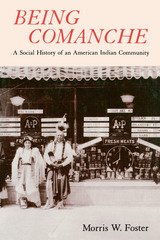 Being Comanche: The Social History of an American Indian Community
Morris W. Foster
University of Arizona Press, 1991 Winner, Erminie Wheeler-Voegelin Book Award (American Society for Ethnohistory)
Comanches have engaged Euro-Americans' curiosity for three centuries. Their relations with Spanish, French, and Anglo-Americans on the southern Plains have become a highly resonant part of the mythology of the American West. Yet we know relatively little about the community that Comanches have shared and continue to construct in southwestern Oklahoma. Morris W. Foster has written the first study of Comanches' history that identifies continuities in their intracommunity organization from the initial period of European contact to the present day. Those continuities are based on shared participation in public social occasions such as powwows, peyote gatherings, and church meetings Foster explains how these occasions are used to regulate social organization and how they have been modified by Comanches to adapt them to changing political and economic relations with Euro-Americans. Using a model of community derived from sociolinguistics, Foster argues that Comanches have remained a distinctive people by organizing their face-to-face relations with one another in ways that maintain Comanche-Comanche lines of communication and regulate a shared sense of appropriate behavior. His book offers readers a significant reinterpretation of traditional anthropological and historical views of Comanche social organization.
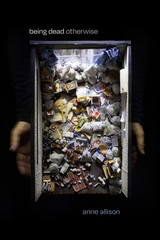 Being Dead Otherwise
Anne Allison
Duke University Press, 2023 With an aging population, declining marriage and childbirth rates, and a rise in single households, more Japanese are living and dying alone. Many dead are no longer buried in traditional ancestral graves where descendants would tend their spirits, and individuals are increasingly taking on mortuary preparation for themselves. In Being Dead Otherwise Anne Allison examines the emergence of new death practices in Japan as the old customs of mortuary care are coming undone. She outlines the proliferation of new industries, services, initiatives, and businesses that offer alternative means---ranging from automated graves, collective grave sites, and crematoria to one-stop mortuary complexes and robotic priests---for tending to the dead. These new burial and ritual practices provide alternatives to long-standing traditions of burial and commemoration of the dead. In charting this shifting ecology of death, Allison outlines the potential of these solutions to radically reorient sociality in Japan in ways that will impact how we think about the end of life, identity, tradition, and culture in Japan and beyond.
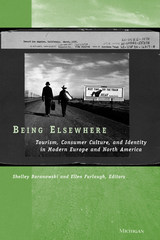 Being Elsewhere: Tourism, Consumer Culture, and Identity in Modern Europe and North America
Shelley Baranowski and Ellen Furlough, Editors
University of Michigan Press, 2001 The first edited collection of its kind, Being Elsewhere focuses on the history of tourism in Europe and North America from the early nineteenth century. The volume brings together new scholarship that explores tourism's significance to such major historical developments as class formation, political mobilization, the tensions between nation-building and regional development, and the power of mass consumer culture.
The essays focus on the ways in which tourism and vacations have been historically constitutive of class, social status, and collective identities. Explorations into the history of tourism and vacations reveal their importance for constructing modern cultural meanings of experience, desire, visuality, mobility, and the care of the self, as well as for representing the "good life" and the benefits of consumerism. A major contribution of this book is to demonstrate tourism's importance for nation-building, whether by mobilizing mass consent through state-sponsored leisure organizations, granting paid vacations as a right of citizenship, or creating new tourist sites meant to signify the "essence" of the nation.
Providing historical context and geographical specificity to a subject that has long engaged sociologists, anthropologists, geographers, and literary theorists, but rarely historians, Being Elsewhere is exactly the collection to interest historians, social scientists, and scholars of literary and cultural studies.
Shelley Baranowski is Professor of History, University of Akron. Ellen Furlough is Associate Professor of History, University of Kentucky.
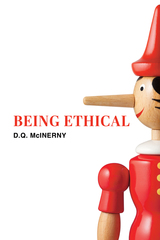 Being Ethical
D. Q. McInerny
St. Augustine's Press, 2020 A hallmark of Western culture is a massive moral confusion, rendering the very idea of virtue “exotic and incomprehensible.” McInerny here drags the conversation back to the beginning, establishing the terms and the tools of what it means to think and to do what is moral. As he asserts, the virtuous life and the moral life are one and the same. To be moral is to be good, and the goodness of one’s acts reflects the fundamentals of thought placed in the service of a pursuit of a virtuous life. Why is the concept of a virtuous life so foreign to many? We do not know the basics of a moral life. As McInerny states, “To be good we have to know what that means.”
The two biggest judgments one will make during life pertain to knowing what is good, what is bad, and the difference between the two. This bleeds into a study of morality and ethics when it pertains to concrete acts, but in reality all aspects of our lives bear on these judgments. “Being ethical is not simply a state of mind, it is a state of being, a way of living one’s life that reflects the fundamental principles of ethics [...] [it is one] who lives in a certain way.” Nevertheless, the subject of this book focuses on ethics––namely, the goodness or badness of human acts. McInerny’s great reason for writing this work is to teach the reader that he or she cannot properly tackle ethical questions (even if they are not identified as such) if one is not himself or herself actually ethical (living virtuously).
Writing very much as a teacher of teachers, McInerny relies on the foundations of Aristotle and Thomas Aquinas, as well as his late brother, Ralph McInerny, to reiterate the principles of ethics that inform both thought and act. To speak of ethics, then, is to admit a commitment to virtue and how the theoretical distinction of good and bad is necessarily practical. Acting well will lead to thinking better, but McInerny notes that culture has lost sight of the former and thereby the coherency to address ethical questions. Being Ethical aims to correct this disconnect in forty-eight cogent lessons.
Being Ethical is fundamentally intended to serve as a sequel to D. Q. McInerny’s Being Logical (Random House, 2004), which has remained in print and has been translated into six languages. Its style lends itself to being used as a textbook in liberal studies. More generally, it is a refreshing presentation of this topic and timely and timeless exhortation to readers of the necessity of a love of virtue for ethical thought. For friends and students of Aristotle, Thomas Aquinas and Ralph McInerny, this book bears a style and manner that is both familiar and much loved.
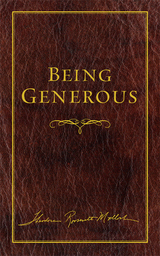 Being Generous
Theodore Roosevelt Malloch
Templeton Press, 2010 Through the ages, the world’s cultures and great religions have in profound, though different, ways sought to answer the big question: how should we live? Part of the answer has to do with how we ought to treat others, particularly those who are most in need. Ample evidence suggests that giving selflessly to others lies at the heart of what it means to be a thoughtful and moral human being. In Being Generous, author Theodore Roosevelt Malloch leads an exploration of this important concept of generous giving. He begins by examining how generosity fits into the various spiritual traditions, philosophical schools, and economic systems. Further chapters illustrate how generosity need not always be about money, showing how it might also involve the sharing of time and talent. Elsewhere, Malloch explores the science behind generosity, looking, for example, at the relationship between various chemicals in the brain and generous behavior. Beyond the theory and the science of generosity, readers will also find a wealth of inspiration in a collection of profiles of past and present icons of generosity. Being Generous concludes with a practical action plan that lays out concrete steps to guide readers toward lives of greater giving.
Being Governor: The View from the Office
Thad L. Beyle and Lynn Muchmore, eds.
Duke University Press, 1983 This book examines the changing role of the governor in our federal system, giving particular attention to recent developments. The expansion of gubernatorial responsibilities into managerial, executive, and intergovernmental positions has taken place at the same time that the governor's role as leader of his political party has declined. In discussing the contemporary role of governors, the editors provide a view of how the office functions on a day-to-day basis. The editors base their data on personal experience; interviews with governors, former governors, and staff; on -site visits; and responses to a series of nineteen surveys of governors and their staff conducted between 1976 and 1981. The research was undertaken by the Center for Policy Research of the National Governors' Association.
Being Here Is Glorious: On Rilke, Poetry, and Philosophy
James D. Reid
Northwestern University Press, 2015 With a new translation of the Duino Elegies
“Who, if I cried out, would hear me among the angels’/orders?” Rainer Maria Rilke’s Duino Elegies opens with one of the most powerful poetic expressions of the search for meaning in the modern world. Published in 1923, the Elegies would influence important philosophers on the Continent, including Heidegger. But with a few exceptions, Rilke’s poetry has not had an impact on philosophy in the Anglo-American world. In Being Here Is Glorious, James D. Reid offers a fresh translation of the Elegies, which hews to the form of the original and provides his own meditation on the place of poetry in philosophy. Reid makes a convincing case that poetry and philosophy can address the problem of finding things significant and worth affirming in light of various reasons to doubt the value of the world in which we find ourselves cast.
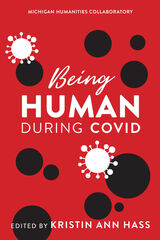 Being Human during COVID
Kristin Ann Hass, Editor
University of Michigan Press, 2021 Science has taken center stage during the COVID-19 crisis; scientists named and diagnosed the virus, traced its spread, and worked together to create a vaccine in record time. But while science made the headlines, the arts and humanities were critical in people’s daily lives. As the world went into lockdown, literature, music, and media became crucial means of connection, and historians reminded us of the resonance of the past as many of us heard for the first time about the 1918 influenza pandemic. As the twindemics of COVID-19 and racial injustice tore through the United States, a contested presidential race unfolded, which one candidate described as “a battle for the soul of the nation."
Being Human during COVID documents the first year of the pandemic in real time, bringing together humanities scholars from the University of Michigan to address what it feels like to be human during the COVID-19 crisis. Over the course of the pandemic, the questions that occupy the humanities—about grieving and publics, the social contract and individual rights, racial formation and xenophobia, ideas of home and conceptions of gender, narrative and representations and power—have become shared life-or-death questions about how human societies work and how culture determines our collective fate. The contributors in this collection draw on scholarly expertise and lived experience to try to make sense of the unfamiliar present in works that range from traditional scholarly essays, to personal essays, to visual art projects. The resulting book is shot through with fear, dread, frustration, and prejudice, and, on a few occasions, with a thrilling sense of hope.
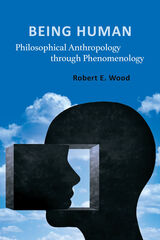 Being Human: Philosophical Anthropology through Phenomenology
Robert E. Wood
Catholic University of America Press, 2022 Being Human is the fruit of many years teaching Philosophical Anthropology, conducting Phenomenological Workshops, and reading classic texts in the light of a reflective awareness of the field of experience. Being Human is intended to look to what is typically assumed but not examined in much of current philosophical literature.
Today what typically appear as philosophical are textual studies that draw upon wide-ranging scholarship to learn how past thinkers used to think; or works that tend either to be “high-flying,” operating at levels of abstraction far removed from experience and written in arcane style, and thus, for both reasons, difficult to assess (much of Continental thought); or minutely focused upon particular claims and the arguments that can be advanced for and against them (Analytical thought); or deconstructing texts to show how they do not fully work (the followers of Jacques Derrida). Scholarly study, abstract constructions, refined arguments, and deconstructive strategies are each important in their own way; but all take place within the structure of the field of experience which is typically assumed without paying explicit attention to it. Especially in philosophy of mind, the overall field of experience has too often been ignored, usually in favor of some conjecture as to how our ordinary categories would have to be changed when neuro-physiology will be far enough advanced to explain all our behavior.
Robert E. Wood claims that it is best to understand what it is that is supposed to be explained before conjecturing about possible explanations. But when you do that, you will have to come to terms with what it means to seek explanation, what a Who is that seeks it, and why it is sought.
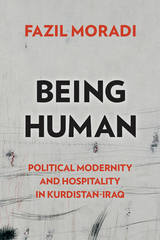 Being Human: Political Modernity and Hospitality in Kurdistan-Iraq
Fazil Moradi
Rutgers University Press, 2024 The Iraqi Baʿth state’s Anfāl operations (1987-1991) is one of the twentieth century’s ultimate acts of destruction of the possibility of being human. It remains the first and only crime of state in the Middle East to be tried under the 1948 UN Genocide Convention, the 1950 Nuremberg Principles, and the 1969 Iraqi Penal Code and to be recognized as genocide, crimes against humanity, and war crimes in Baghdad between 2006 and 2007. Being Human: Political Modernity and Hospitality in Kurdistan-Iraq offers an unprecedented pathway to the study of political violence. It is a sweeping work of anthropological hospitality, returning to the Anfāl operations as the violence of political modernity only to turn to the human survivors’ hospitality and acts of translation—testimonial narratives, law, politics, archive, poetry, artworks, museums, memorials, symbolic cemeteries, and infinite pursuit of justice in the Kurdistan Region of Iraq. Being Human gathers together social sciences, humanities, and the arts to understand modernity's violence and its living on.
 Being Human: The Search for Order
Seán Ó Nualláin
Intellect Books, 2013 We live at a time of unparallelled environmental and moral crisis. Not only do we not believe anything but, despite exponential advances in information production, we do not know very much either. This book is a guide for everyone who, understandably, feels perplexed.
Presenting an explanation of recent findings in science and their relationship with society and politics as we enter the third millennium, the book also seeks to provide guidance towards responsible political action in this current crisis. From new technology's power to preserve the status quo, to the true impetus behind the Human Genome Project, Sean Ó Nualláin brings to topical concerns some much needed clarity.
Complete with reader-friendly summaries to current thought in the biological, physical, and social sciences, the book is designed to be accessible to a general readership, it should also appeal to all those working or studying in the Sciences.
 Being in the World: A Quotable Maritain Reader
Mario O. D'Souza, C.S.B.
University of Notre Dame Press, 2014 The work of the lay Catholic philosopher Jacques Maritain (1882-1973) continues to provoke and inspire readers to engage in a Thomistic approach to many of the questions facing the world today. Maritain’s wide-ranging thought touched on many fields, including aesthetics, anthropology, educational theory, moral philosophy, and ethics, as well as Thomism and its relationship to other philosophical stances.
In Being in the World: A Quotable Maritain Reader, Mario O. D’Souza, C.S.B., has selected seven hundred and fifty of the most salient quotations found in the English translations of fifty-four works by Jacques Maritain. Organized into forty thematic chapters, ordered alphabetically, the book serves as an overview of the areas that Maritain's writings addressed. By referring to entries in Being in the World, readers can quickly locate key passages in Maritain’s writing on a given topic and then turn elsewhere to the full texts for more in-depth study. Complete with a detailed index of key terms, the Reader will be an essential reference tool for the study of Maritain in English.
"Fr. Mario O. D'Souza's careful selection from the works of Jacques Maritain provides the reader with an invaluable sampling of Maritain's extensive philosophical work. In it, we find examples of Maritain's almost lyrical gift of expression as well as of his trenchant wit. More than a scholarly contribution, the volume also ably serves as an introduction and entrance into Maritain's corpus." — William Sweet, St. Francis Xavier University, Canada
"Being in the World: A Quotable Maritain Reader makes an original contribution to the field of Maritain studies and to philosophy generally. Maritain is a thinker of great insight and a writer with a fine style. It is very useful to lay out these quotes containing many of his insights and showing his methods and lines of argument. The volume will be of interest not only to philosophers but also to scholars and readers from other fields such as politics, the arts, religion, and education." —John Hittinger, University of St. Thomas
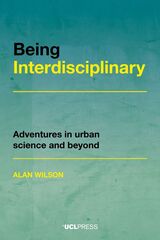 Being Interdisciplinary: Adventures in Urban Science and Beyond
Alan Wilson
University College London, 2022 An accessible and enjoyable guide to interdisciplinary research from a leading academic in urban science.
In Being Interdisciplinary, Alan Wilson draws on five decades as a leading figure in urban science to set out a systems approach to interdisciplinarity for those conducting research in this and other fields. He argues that most research is interdisciplinary at its base and that a systems perspective is particularly appropriate for collaboration because it fosters an outlook that sees beyond disciplines. A systems approach enables researchers to identify the game-changers of the past as a basis for thinking outside of convention, for learning how to do something new and how to be ambitious.
Building on this systems focus, the book first establishes the basics of interdisciplinarity. Then, by drawing on the author’s wide experience in interdisciplinary research—as a researcher in urban science, a university professor and vice-chancellor, a civil servant, and an institute director, it illustrates general principles and a framework from which researchers can build their own interdisciplinary approach. In the last section, the book tackles questions of managing and organizing research from individual to institutional scales.
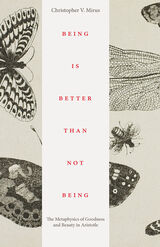 Being is Better Than Not Being: The Metaphysics of Goodness and Beauty in Aristotle
Christopher V. Mirus
Catholic University of America Press, 2022 In his contemplative works on nature, Aristotle twice appeals to the general principle that being is better than not being. Taking his cue from this claim, Christopher V. Mirus offers an extended, systematic account of how Aristotle understands being itself to be good.
Mirus begins with the human, examining Aristotle’s well-known claim that the end of a human life is the good of the human substance as such—which turns out to be the good of the human capacity for thought. Human thought, however, is not concerned with human affairs alone. It is also contemplative, and contemplation is oriented toward the beauty of its objects. In each of the three branches of contemplative thought—mathematics, natural science, and theology—the intelligibility of being renders it beautiful to thought. Both in nature and in human life, moreover, the being that is beautiful through its intelligibility serves also as an end of motion and of action; hence it counts not only as beautiful (kalon), but also as good (agathon).
The persistent concern of thought with the beautiful reveals what is at stake for human beings in Aristotle’s larger metaphysics of the good: in the connection between goodness and actuality that structures his natural science and metaphysics, in his explicit claim that being is better than not being, and in his concepts of order and determinacy, which help connect being with goodness. These in turn shed light on his concepts of the complete and the self-sufficient, on his teleological understanding of the four elements, and on the curious role of the honorable in his natural science and metaphysics.
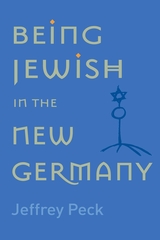 Being Jewish in the New Germany: Being Jewish in the New Germany, First Paperback Edition
Jeffrey M. Peck
Rutgers University Press, 2007 Germany today boasts the fastest growing population of Jews in Europe. The streets of Berlin abound with signs of a revival of Jewish culture, ranging from bagel shops to the sight of worshipers leaving synagogue on Saturday. With the new energy infused by Jewish immigration from Russia and changes in immigration and naturalization laws in general, Jeffrey M. Peck argues that we must now begin considering how Jews live in Germany rather than merely asking why they would choose to do so. In Being Jewish in the New Germany, Peck explores the diversity of contemporary Jewish life and the complex struggles within the community-and among Germans in general-over history, responsibility, culture, and identity. He provides a glimpse of an emerging, if conflicted, multicultural country and examines how the development of the European Community, globalization, and the post-9/11 political climate play out in this context. With sensitive, yet critical, insight into the nation's political and social life, chapters explore issues such as the shifting ethnic/national makeup of the population, changes in political leadership, and the renaissance of Jewish art and literature. Peck also explores new forms of anti-Semitism and relations between Jews and Turks-the country's other prominent minority population. In this surprising description of the rebirth of a community, Peck argues that there is, indeed, a vibrant and significant future for Jews in Germany. Written in clear and compelling language, this book will be of interest to the general public and scholars alike.
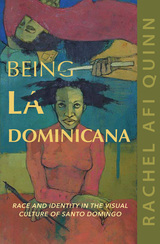 Being La Dominicana: Race and Identity in the Visual Culture of Santo Domingo
Rachel Afi Quinn
University of Illinois Press, 2021 Rachel Afi Quinn investigates how visual media portray Dominican women and how women represent themselves in their own creative endeavors in response to existing stereotypes. Delving into the dynamic realities and uniquely racialized gendered experiences of women in Santo Domingo, Quinn reveals the way racial ambiguity and color hierarchy work to shape experiences of identity and subjectivity in the Dominican Republic. She merges analyses of context and interviews with young Dominican women to offer rare insights into a Caribbean society in which the tourist industry and popular media reward, and rely upon, the ability of Dominican women to transform themselves to perform gender, race, and class. Engaging and astute, Being La Dominicana reveals the little-studied world of today's young Dominican women and what their personal stories and transnational experiences can tell us about the larger neoliberal world.
Being Maasai: Ethnicity and Identity In East Africa
Thomas Spear
Ohio University Press, 1993 Everyone “knows” the Maasai as proud pastoralists who once dominated the Rift Valley from northern Kenya to central Tanzania.
But many people who identity themselves as Maasai, or who speak Maa, are not pastoralist at all, but farmers and hunters. Over time many different people have “become” something else. And what it means to be Maasai has changed radically over the past several centuries and is still changing today.
This collection by historians, archaeologists, anthropologists and linguists examines how Maasai identity has been created, evoked, contested, and transformed from the time of their earliest settlement in Kenya to the present, as well as raising questions about the nature of ethnicity generally.
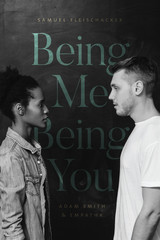 Being Me Being You: Adam Smith and Empathy
Samuel Fleischacker
University of Chicago Press, 2019 Modern notions of empathy often celebrate its ability to bridge divides, to unite humankind. But how do we square this with the popular view that we can never truly comprehend the experience of being someone else? In this book, Samuel Fleischacker delves into the work of Adam Smith to draw out an understanding of empathy that respects both personal difference and shared humanity.
After laying out a range of meanings for the concept of empathy, Fleischacker proposes that what Smith called “sympathy” is very much what we today consider empathy. Smith’s version has remarkable value, as his empathy calls for entering into the perspective of another—a uniquely human feat that connects people while still allowing them to define their own distinctive standpoints. After discussing Smith’s views in relation to more recent empirical and philosophical studies, Fleischacker shows how turning back to Smith promises to enrich, clarify, and advance our current debates about the meaning and uses of empathy.
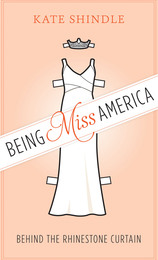 Being Miss America: Behind the Rhinestone Curtain
By Kate Shindle
University of Texas Press, 2014 For nearly a hundred years, young women have competed for the title of Miss America—although what it means to wear the crown and be our “ideal” has changed dramatically over time. The Miss America Pageant began as a bathing beauty contest in 1920s Atlantic City, New Jersey, sponsored by businessmen trying to extend the tourist season beyond Labor Day. In the post–World War II years, the pageant evolved into a national coronation of an idealized “girl next door,” as pretty and decorous as she was rarely likely to speak her mind on issues of substance. Since the cultural upheavals of the 1960s, the pageant has struggled to find a balance between beauty and brains as it tries to remain relevant to women who aspire to become leaders in the community, not hot babes in swimsuits. In Being Miss America, Kate Shindle interweaves an engrossing, witty memoir of her year as Miss America 1998 with a fascinating and insightful history of the pageant. She explores what it means to take on the mantle of America’s “ideal,” especially considering the evolution of the American female identity since the pageant’s inception. Shindle profiles winners and organization leaders and recounts important moments in the pageant’s story, with a special focus on Miss America’s iconoclasts, including Bess Myerson (1945), the only Jewish Miss America; Yolande Betbeze (1951), who crusaded against the pageant’s pinup image; and Kaye Lani Rae Rafko (1987), a working-class woman from Michigan who wanted to merge her famous title with her work as an oncology nurse. Shindle’s own account of her work as an AIDS activist—and finding ways to circumvent the “gown and crown” stereotypes of Miss America in order to talk honestly with high school students about safer sex—illuminates both the challenges and the opportunities that keep young women competing to become Miss America.
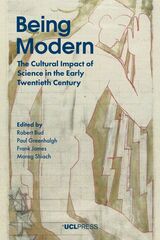 Being Modern: The Cultural Impact of Science in the Early Twentieth Century
Edited by Robert Bud, Paul Greenhalgh, Frank James, and Morag Shiach
University College London, 2018 In the early decades of the twentieth century, engagement with science was commonly used as an emblem of modernity. This phenomenon is now attracting increased attention in different historical specialties. Being Modern builds on this recent interest to explore engagements with science across culture from the end of the nineteenth century to approximately 1940. Addressing the breadth of cultural forms in Britain and the western world from the architecture of Le Corbusier to working class British science fiction, Being Modern paints a rich picture. Seventeen distinguished contributors from a range of fields, including the history of science and technology, art, architecture, and English culture and literature examine the issues involved. The book will be a valuable resource for further examination of culture as an interconnected web of which science was a critical part.
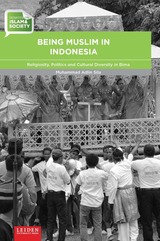 Being Muslim in Indonesia: Religiosity, Politics and Cultural Diversity in Bima
Muhammad Adlin Sila
Leiden University Press, 2021 How Muslims in Indonesia consider their religious practices, politics and culture as Islamic is described in this volume. By examining the various ways Bima Muslims constitute their Islamic identities and agencies through rituals and festivals, this book argues that religious practice is still vigorous in present Bima. It explores the reproduction of religious meanings among various local Muslims and the differences between social groups. Islam is represented as divided between the traditionalist Muslims and the reformist Muslims, between the royal family and the ordinary Muslims, and between Muslim clerics and lay people. Consequently, there is no single picture of Islam. As Bima Muslims construe their Islam in response to their surroundings, what it means to be a Muslim is constantly being negotiated. The complexity of religious life has been a result of the duality of socio-political settings in Bima which stems from the early period of the Islamization of Bima to the present.
The Being of the Beautiful: Plato's Theaetetus, Sophist, and Statesman
Plato
University of Chicago Press, 1984 The Being of the Beautiful collects Plato’s three dialogues, the Theaetetus, Sophist, and Statesmen, in which Socrates formulates his conception of philosophy while preparing for trial. Renowned classicist Seth Benardete’s careful translations clearly illuminate the dramatic and philosophical unity of these dialogues and highlight Plato’s subtle interplay of language and structure. Extensive notes and commentaries, furthermore, underscore the trilogy’s motifs and relationships.
“The translations are masterpieces of literalness. . . . They are honest, accurate, and give the reader a wonderful sense of the Greek.”—Drew A. Hyland, Review of Metaphysics
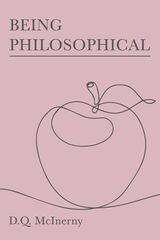 Being Philosophical
D. Q. McInerny
St. Augustine's Press, 2023 Everyone must become a philosopher. The alternate is to forego living a human life, or as D. Q. McInerny illustrates, to run while choosing to be hamstrung. But not all philosophizing is equal, and it requires discipline and systematic study. In "creative impatience with ignorance" and "an unswerving commitment to the truth," one can be confident he is at least moving in the right direction toward genuine philosophy.
But most importantly, philosophy requires teachers. To philosophize is, after all, to be an eternal student, a person who even while instructing others relies on the guidance found in the 'fertile' human wisdom cultivated throughout the ages. And the most fecund of all philosophy, according to McInerny, is that contained in Aristotelian-Thomism. His concise and thorough defense of the philosophical life and its lodestar, Thomism, must be read as deliberately as it was written. For McInerny makes a bold claim: if one is truly serious about philosophizing, an encounter with the essentials of Thomism is fundamental and indicates a path for the human mind unlike anything other systems or traditions of thought can offer.
This book begins with logic and is followed by introductions to the philosophy of nature, philosophical psychology, epistemology, ethics, political philosophy, metaphysics and natural theology. It is a companion for students of all ages who have yet to spend quality time with Thomas Aquinas. And it is a real delight to do so in the company of McInerny, who in Being Ethical (2019) has already proven himself to be the affable and able teacher every thinking person longs to meet along the course of his search for truth.
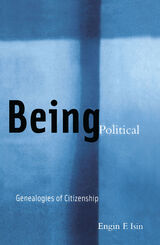 Being Political: Genealogies of Citizenship
Engin F. Isin
University of Minnesota Press, 2002 A provocative counterhistory-and a bold new approach-to notions of citizenship. What does it mean to be political? Every age has based its answer on citizenship, bequeathing us such indelible images as that of the Greek citizen exercising his rights and obligations in the agora, the Roman citizen conducting himself in the forum, medieval citizens receiving their charter before the guildhall. Being Political disrupts these images by approaching citizenship as otherness, presenting a powerful critique of universalistic and orientalist interpretations of the origins of citizenship and a persuasive alternative history of the present struggles over citizenship. Who were the strangers and outsiders of citizenship? What strategies and technologies were invented for constituting those forms of otherness? Focusing on these questions, rather than on the images conveyed by history’s victors, Being Political offers a series of genealogies of citizenship as otherness. Engin F. Isin invokes the city as a "difference machine," recovering slaves, peasants, artisans, prostitutes, vagabonds, savages, flextimers, and squeegee men in the streets of the polis, civitas, metropolis, and cosmopolis. The result is a challenge to think in bolder terms about citizenship at a time when the nature of citizenship is an increasingly open question.
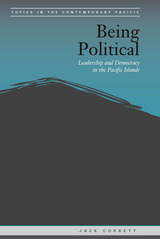 Being Political: Leadership and Democracy in the Pacific Islands
Jack Corbett
University of Hawaii Press, 2015 Politicians everywhere tend to attract cynicism and inspire disillusionment. They are supposed to epitomize the promise of democratic government and yet invariably find themselves cast as the enemy of every virtue that system seeks to uphold. In the Pacific, “politician” has become a byword for corruption, graft, and misconduct. This was not always the case—the independence generation is still remembered as strong leaders—but today’s leaders are commonly associated with malaise and despair. Once heroes of self-determination, politicians are now the targets of donor attempts to institute “good governance,” while Fiji’s 2006 coup was partly justified on the grounds that they needed “cleaning up.” But who are these much-maligned figures? How did they come to arrive in politics? What is it like to be a politician? Why do they enter, stay, and leave? Drawing on more than 110 interviews and other published sources, including autobiographies and biographies, Being Political provides a collective portrait of the region’s political elite. This is an insider account of political life in the Pacific as seen through the eyes of those who have done the job. Corbett shows that politics is a messy, unpredictable, and, at times, dirty business that nonetheless inspires service and sacrifice. Being a politician has changed since independence, but politics continues to be deeply imbedded in the lives of individuals, families, and communities; an account that belies the common characterization of democracy in the Pacific as a “façade” or “foreign flower.” Ultimately, this is a sympathetic counter-narrative to the populist critique. We come to know politicians as people with hopes and fears, pains and pleasures, vices and virtues. As such, this book is a must-read for all those who believe in the promise of representative government.
 Being Present: Commanding Attention at Work (and at Home) by Managing Your Social Presence
Jeanine W. Turner
Georgetown University Press, 2023 Gold Medal – Networking, Social Media, and Communication – Axiom Business Book Awards, 2022
JP Morgan Summer Reading List 2022 Survival strategies for communicating in a notification-saturated world As our ability to pay attention in a world of distractions vanishes, it’s no wonder that our ability to be heard and understood—to convey our messages—is also threatened. Whether working with our teams and customers or communicating with our families and friends, it is increasingly difficult to break through the digital devices that get in the way of communication. And the ubiquity of digital devices means that we are often “multicommunicating,” participating in multiple conversations at once. As a result, our ability to be socially present with an audience requires an intentional approach. This increased strain on attention has never been more clear than during the global pandemic, when our homes suddenly accommodated both work and family life. What are our options when facing professional communications at all hours? Do we ask for the technology to be put away at the dinner table? Establish other ground rules? What about using digital communications to our advantage—how can we facilitate information-sharing in the midst of a world where we are overwhelmed with content? Drawing from fifteen years of research, interviews, and experience from teaching students and executives, Jeanine W. Turner offers a framework to navigate social presence at work and at home. By exploring four primary communication choices—budgeted, entitled, competitive, and invitational—Turner shows when and where to employ each strategy to most effectively allocate our attention and command the attention of others. Each chapter includes concrete strategies and concludes with reflection questions and exercises to help readers further explore these decisions in professional and personal relationships.
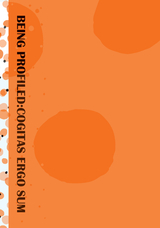 BEING PROFILED:COGITAS ERGO SUM: 10 Years of Profiling the European Citizen
Emre Bayamlioglu
Amsterdam University Press, 2019 This book celebrates and mourns the increasing relevance of the 2008 volume of 'Profiling the European Citizen. Cross-Disciplinary Perspectives' (edited by Mireille Hildebrandt & Serge Gutwirth). Both volumes contain in-depth investigations by lawyers, philosophers and computer scientists into the legal, philosophical and computational background of the emerging algorithmic order. In BEING PROFILED:COGITAS ERGO SUM 23 scholars engage with the issues, underpinnings, operations and implications of micro-targeting, data-driven critical infrastructure, ethics-washing, p-hacking and democratic disruption. These issues have now become part of everyday life, reinforcing the urgency of the question: are we becoming what machines infer about us, or are we? This book has been designed as a work of art by Bob van Dijk, the hardcopy has been printed as a limited edition. The separate chapters (2000 word provocations) will become available in open access in 2019.
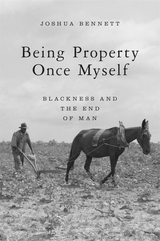 Being Property Once Myself: Blackness and the End of Man
Joshua Bennett
Harvard University Press, 2020 Winner of the William Sanders Scarborough Prize
“This trenchant work of literary criticism examines the complex ways…African American authors have written about animals. In Bennett’s analysis, Richard Wright, Toni Morrison, Jesmyn Ward, and others subvert the racist comparisons that have ‘been used against them as a tool of derision and denigration.’...An intense and illuminating reevaluation of black literature and Western thought.”
—Ron Charles, Washington Post
For much of American history, Black people have been conceived and legally defined as nonpersons, a subgenre of the human. In Being Property Once Myself, prize-winning poet Joshua Bennett shows that Blackness has long acted as the caesura between human and nonhuman and delves into the literary imagination and ethical concerns that have emerged from this experience. Each chapter tracks a specific animal—the rat, the cock, the mule, the dog, the shark—in the works of Richard Wright, Toni Morrison, Zora Neale Hurston, Jesmyn Ward, and Robert Hayden. The plantation, the wilderness, the kitchenette overrun with pests, the valuation and sale of animals and enslaved people—all place Black and animal life in fraught proximity.
Bennett suggests that animals are deployed to assert a theory of Black sociality and to combat dominant claims about the limits of personhood. And he turns to the Black radical tradition to challenge the pervasiveness of anti-Blackness in discourses surrounding the environment and animals. Being Property Once Myself is an incisive work of literary criticism and a groundbreaking articulation of undertheorized notions of dehumanization and the Anthropocene.
“A gripping work…Bennett’s lyrical lilt in his sharp analyses makes for a thorough yet accessible read.”
—LSE Review of Books
“These absorbing, deeply moving pages bring to life a newly reclaimed ethics.”
—Colin Dayan, author of The Law Is a White Dog
“Tremendously illuminating…Refreshing and field-defining.”
—Salamishah Tillet, author of Sites of Slavery
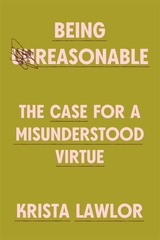 Being Reasonable: The Case for a Misunderstood Virtue
Krista Lawlor
Harvard University Press A leading philosopher explores what it means to be reasonable—and why it matters for the well-being of our society.
Reasonableness plays many roles in our lives. In Anglo-American law, it is the yardstick for a wide range of behavior—the “reasonable-person standard” governs everything from contract enforcement to killing in self-defense. In politics, a state can maintain a liberal democracy only if its citizens are reasonable. In ordinary life, we hold each other accountable to reason: We criticize the unreasonable of bosses who demand too much of our time or of partners who make decisions without regard for our preferences.
But what does it mean to be reasonable? Being reasonable is not the same as being rational. It is also different from being thoughtful. In Being Reasonable, Krista Lawlor argues that a reasonable person seeks to understand what is valuable. A reasonable person must be rational enough to figure out what is valuable and thoughtful enough to care about what other people find valuable, but rationality and thoughtfulness alone do not suffice to make one reasonable. Even an ideally rational and thoughtful person might fail to understand, or lack the concern to understand, what is valuable.
Being Reasonable is the first comprehensive study of reasonableness. Lawlor provides an account of the nature of reasonableness and, further, explains how we manage to be reasonable. Humans discover what is valuable by listening to their emotions and by listening to each other. By taking command over our emotions, and by interacting attentively with others, we can live up to the standard set by society and law.
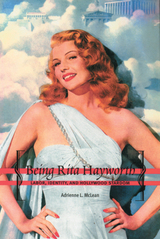 Being Rita Hayworth: Labor, Identity, and Hollywood Stardom
McLean, Adrienne L
Rutgers University Press, 2004 Who was Rita Hayworth? Born Margarita Carmen Cansino, she spent her life subjected to others' definitions of her, no matter how hard she worked to claim her own identity. Although there have been many "revelations" about her life and career, Adrienne McLean's book is the first to show that such disclosures were part of a constructed image from the outset.
McLean explores Hayworth's participation in the creation of her star persona, particularly through her work as a dancer-a subject ignored by most film scholars. The passive love goddess, as it turns out, had a unique appeal to other women who, like her, found it extraordinarily difficult to negotiate the competing demands of family, domesticity, and professional work outside the home. Being Rita Hayworth also considers the ways in which the actress has been treated by film scholarship over the years to accomplish its own goals, sometimes at her expense. Several of Hayworth's best-known star vehicles-among them Gilda (1946), Down to Earth (1947), The Lady from Shanghai (1948), and Affair in Trinidad (1952)- are discussed in depth.
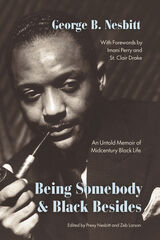 Being Somebody and Black Besides: An Untold Memoir of Midcentury Black Life
George B. Nesbitt
University of Chicago Press, 2021 An immersive multigenerational memoir that recounts the hopes, injustices, and triumphs of a Black family fighting for access to the American dream in the twentieth century.
The late Chicagoan George Nesbitt could perhaps best be described as an ordinary man with an extraordinary gift for storytelling. In his newly uncovered memoir—written fifty years ago, yet never published—he chronicles in vivid and captivating detail the story of how his upwardly mobile Midwestern Black family lived through the tumultuous twentieth century.
Spanning three generations, Nesbitt’s tale starts in 1906 with the Great Migration and ends with the Freedom Struggle in the 1960s. He describes his parents’ journey out of the South, his struggle against racist military authorities in World War II, the promise and peril of Cold War America, the educational and professional accomplishments he strove for and achieved, the lost faith in integration, and, despite every hardship, the unwavering commitment by three generations of Black Americans to fight for a better world. Through all of it—with his sharp insights, nuance, and often humor—we see a family striving to lift themselves up in a country that is working to hold them down.
Nesbitt’s memoir includes two insightful forewords: one by John Gibbs St. Clair Drake (1911–90), a pioneer in the study of African American life, the other a contemporary rumination by noted Black studies scholar Imani Perry. A rare first-person, long-form narrative about Black life in the twentieth century, Being Somebody and Black Besides is a remarkable literary-historical time capsule that will delight modern readers.
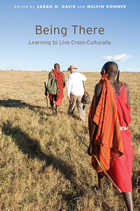 Being There: Learning to Live Cross-Culturally
Sarah H. Davis
Harvard University Press, 2011 How can an academic who does not believe evil spirits cause illness harbor the hope that her cancer may be cured by a healer who enters a trance to battle her demons? Whose actions are more (or less) honorable: those of a prostitute who sells her daughter’s virginity to a rich man, or those of a professor who sanctions her daughter’s hook-ups with casual acquaintances? As they immerse themselves in foreign cultures and navigate the relationships that take shape, the authors of these essays, most of them trained anthropologists, find that accepting cultural difference is one thing, experiencing it is quite another. In tales that entertain as much as they illuminate, these writers show how the moral and intellectual challenges of living cross-culturally revealed to them the limits of their perception and understanding.
Their insights were gained only after discomforts resulting mainly from the authors’ own blunders in the field. From Brazil to Botswana, Egypt to Indonesia, Mongolia to Pakistan, mistakes were made. Offering a gift to a Navajo man at the beginning of an interview, rather than the end, caused one author to lose his entire research project. In Côte d’Ivoire, a Western family was targeted by the village madman, leading the parents to fear for the safety of their child even as they suspected that their very presence had triggered his madness. At a time when misunderstanding of cultural difference is an undeniable source of conflict, we need stories like these more than ever before.
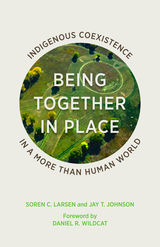 Being Together in Place: Indigenous Coexistence in a More Than Human World
Soren C. Larsen
University of Minnesota Press, 2017 Being Together in Place explores the landscapes that convene Native and non-Native people into sustained and difficult negotiations over their radically different interests and concerns. Grounded in three sites—the Cheslatta-Carrier traditional territory in British Columbia; the Wakarusa Wetlands in northeastern Kansas; and the Waitangi Treaty Grounds in Aotearoa/New Zealand—this book highlights the challenging, tentative, and provisional work of coexistence around such contested spaces as wetlands, treaty grounds, fishing spots, recreation areas, cemeteries, heritage trails, and traditional village sites. At these sites, activists learn how to articulate and defend their intrinsic and life-supportive ways of being, particularly to those who are intent on damaging or destroying these places. Using ethnographic research and a geographic perspective, Soren C. Larsen and Jay T. Johnson show how the communities in these regions challenge the power relations that structure the ongoing (post)colonial encounter in liberal democratic settler-states. Emerging from their conversations with activists was a distinctive sense that the places for which they cared had agency, a “call” that pulled them into dialogue, relationships, and action with human and nonhuman others. This being-together-in-place, they find, speaks in a powerful way to the vitalities of coexistence: where humans and nonhumans are working to decolonize their relationships; where reciprocal guardianship is being stitched back together in new and unanticipated ways; and where a new kind of “place thinking” is emerging on the borders of colonial power.
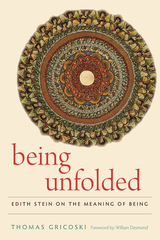 Being Unfolded: Edith Stein on the Meaning of Being
Thomas Gricoski
Catholic University of America Press, 2020 Being Unfolded responds to the question, ‘What is the meaning of being for Edith Stein.’ In Finite and Eternal Being Stein tentatively concludes that ‘being is the unfolding of meaning.’ Neither Stein nor her commentators have elaborated much on this suggestive phrase. Thomas Gricoski argues that Stein’s mature metaphysical project can be developed into an ‘ontology of unfolding.’ The differentiating factor of this ontology is its resistance to both existentialism and essentialism. The ‘ontology of unfolding’ is irreducibly relational.
Being Unfolded proceeds by testing a relational hypothesis against Stein’s theory of the modes of being (actual, essential, and mental being). From the phenomenological perspective, Gricoski examines Stein’s theory of the relation of consciousness and being. From the scholastic perspective, he examines Stein’s account of the relation of essence and existence in material being, living being, and human being. And from both perspectives he considers the relation of divine being to actual being and their essences. This book is limited to Stein’s theory of the meaning of being, without making an explicit confrontation with Heidegger. It offers two primary contributions to Stein studies: a systematic analysis of Stein’s modes of being, especially essential being, and an exposition and expansion of her overlooked concept of unfolding. Being Unfolded also contributes to the broader field of contemporary metaphysics by developing Stein’s theory of being as an experiment in fundamental ontology. While other relational ontologies focus on relations between beings, this exploration of unfolding examines being’s inner self-relationality.
 Being With God: Trinity, Apophaticism, and Divine-Human Communion
Aristotle Papanikolaou
University of Notre Dame Press, 2006 "Being With God is an exceedingly important and well-written book on Orthodox theology of the Trinity. It not only explains the work of two major contemporary Orthodox theologians; it also lends vital insight into the nature and character of contemporary Orthodox theology in general." —Vigen Guroian, Loyola College in Maryland
"This is a splendid work of hard-won insights into crucial figures in the development of contemporary theology. Aristotle Papanikolaou makes an original contribution that will be of great interest not only to students in the area of Eastern Orthodox theology but to anyone studying Christian anthropology, metaphysics, trinitarian thought, or comparative theological method." —Mark McIntosh, Department of Theology, Loyola University of Chicago
The central task of Being With God is an analysis of the relation between apophaticism, trinitarian theology, and divine-human communion through a critical comparison of the trinitarian theologies of the Eastern Orthodox theologians Vladimir Lossky (1903–58) and John Zizioulas (1931– ), arguably two of the most influential Orthodox theologians of the past century. These two theologians identify as the heart and center of all theological discourse the realism of divine-human communion, which is often understood in terms of the familiar Orthodox concept of theosis, or divinization. The Incarnation, according to Lossky and Zizioulas, is the event of a real divine-human communion that is made accessible to all; God has become human so that all may participate fully in the divine life. Aristotle Papanikolaou shows how an ontology of divine-human communion is at the center of both Lossky's and Zizioulas's theological projects. He also shows how, for both theologians, this core belief is used as a self-identifying marker against "Western" theologies.
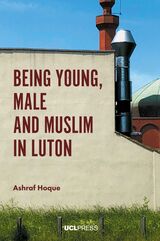 Being Young, Male and Muslim in Luton
Ashraf Hoque
University College London, 2018 What is it like to be a young Muslim man in the wake of the 2005 London bombings? What impact do political factors have on the multifaceted identities of young Muslim men?
Drawn from the author’s ethnographic research of British-born Muslim men in the English town of Luton, Being Young, Muslim and Male in Luton explores the everyday lives of young men and, focusing on how their identity as Muslims has shaped the way they interact with each other, the local community, and the wider world. Through a study of religious values, the pressures of masculinity, the complexities of family and social life, and attitudes towards work and leisure, Ashraf Hoque argues that young Muslims in Luton are subverting what it means to be “British” by consciously prioritizing and rearticulating their “Muslim identities” in novel and dynamic ways that suit their experiences. Employing rich interviews and extensive participant observation, Hoque paints a detailed picture of young Muslims living in a town consistently associated in the popular media with terrorist activity and as a hotbed for radicalization. He challenges widely held assumptions and gives voice to an emerging generation of Muslims who view Britain as their home and are very much invested in the long-term future of the country and their permanent place within it.
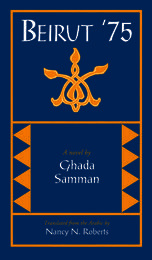 Beirut '75
Ghadah Samman
University of Arkansas Press, 1995 Ghada Samman’s first full-length novel, originally published in Arabic in 1974, is a creative and daring work prophetically depicting the social and political causes of the Lebanese civil war in 1975. The story opens in a taxi in which we meet the five central characters, each seeking something to give life meaning: security, fame, wealth, dignity, recognition, freedom from fear and from tradition-sanctioned, dehumanizing practices. Once they reach the capital city of Beirut, on which they’ve pinned their hopes, they all discover, man and woman alike, that they are victims of forces either partially or completely beyond their control, such as political corruption, class discrimination, economic and sexual exploitation, destruction of the natural environment, and blind allegiance to tradition. Beirut ’75 addresses struggles of Arab society, particularly the Lebanese, but the message is one of the universal human condition. Thus, in addition to this superb English-language presentation, Samman’s novel has already appeared in German (two editions), French, and Italian versions. Winner of The University of Arkansas Press Award for Arabic Literature in Translation.
Bel Canto Bully: The Life and Times of the Legendary Opera Impresario Domenico Barbaja
Philip Eisenbeiss
Haus Publishing, 2013 Unscrupulous, devilishly ambitious and undeniably charismatic, Domenico Barbaja was the most celebrated Italian impresario of the early 1800s and one of the most intriguing characters to dominate the operatic empire of the period. Dubbed the "Viceroy of Naples", Barbaja was the influential force behind the careers of a plethora of artists including Vincenzo Bellini, Gioachino Rossini and the great mezzo-soprano Isabella Colbran. In this book, Eisenbeiss unlocks the enigma of this eccentric and fascinating personality that has been hitherto neglected.
Béla Tarr, the Time After
Jacques Rancière
University of Minnesota Press, 2013 From Almanac of Fall (1984) to The Turin Horse (2011), renowned Hungarian filmmaker Béla Tarr has followed the collapse of the communist promise. The “time after” is not the uniform and morose time of those who no longer believe in anything. It is the time when we are less interested in histories and their successes or failures than we are in the delicate fabric of time from which they are carved. It is the time of pure material events against which belief will be measured for as long as life will sustain it.
 Belarusian Nation-Building in Times of War and Revolution
Lizaveta Kasmach
Central European University Press, 2023 The proclamation of Belarusian independence on March 25, 1918, and the rival establishment of the Soviet Belarusian state on January 1, 1919, created two distinct and mutually exclusive national myths, which continue to define contemporary Belarusian society. This book examines the processes that resulted in this dual resolution in the context of World War I and the subsequent Russian Revolutions. Based on original archival material, Lizaveta Kasmach scrutinizes the development of competing concepts of Belarusian nationhood in the context of rivaling national aspirations and imperial policies. The analysis convincingly demonstrates the divisions within the nationalist movement, both politically between the moderates and socialists, and geographically between German-occupied territory with Vilna as a center versus Russian-controlled territory around Minsk. Besides the case study of Belarusian nation-building efforts, the book is a contribution to the study of the First World War in East Central Europe, approaching the war and its aftermath as a mobilizational moment in the region.
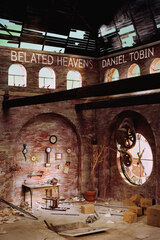 Belated Heavens
Daniel Tobin
Four Way Books, 2010 Daniel Tobin’s fifth book, Belated Heavens, spans from prehistory to modern Manhattan, Neanderthals “cowering in caves” to a man snoring in Penn Station as if he’s “swallowed an espresso machine.” Tobin delves into timeless themes of violence, destruction and endurance, his poems running the gamut from form to free verse as they offer the reader an underlying hope, a tentative belief, that, yes, we are surviving—somehow, thank heavens. An award-winning Irish American poet and scholar, Daniel Tobin’s assorted iconographic choices will hook every reader, whether by poems about environmental consciousness, murdered heretics, meal bugs or the caves of Lascaux. Throughout the writing is an ever-present violence that at times is as quiet and slow as “an endless tongue of water licking seams / where stone foundation meets concrete floor,” while other times is as brute and in your face as a “village idiot’s shredded legs.” Violence, however, is not the main concern of this collection, but rather how humanity thrives despite the volatility of the world.
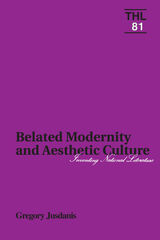 Belated Modernity and Aesthetic Culture: Inventing National Literature
Gregory Jusdanis
University of Minnesota Press, 1991 How does literature function in the formation of a nation-state? What are its pivotal contributions to national discourse and the production of ideological collective will? And, ultimately, how is literature institutionalized and aestheticized? Belated Modernity and Aesthetic Culture: Inventing National Literature addresses these questions and considers the role literature plays in the construction of a national cultural. Gregory Jusdanis examines the emergence of art and literature in Western Europe in the eighteenth century and traces their introduction to Greece, a stratified, noncapitalist society that was hostile to Enlightenment and secularism. This groundbreaking work explores the importation of national literatures into a largely non-Western society and the inherent resistance they faced.Arguing for the literary status of national culture at its inception, Jusdanis brilliantly demonstrates that in literature, the specific meanings in narratives and fiction form the process of nation building. Culture, history, and literature, he says, merge in those narratives, which in turn provide the imaginary mirror in which a nation reflects itself.
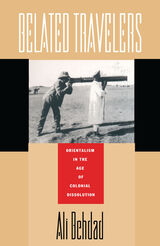 Belated Travelers: Orientalism in the Age of Colonial Dissolution
Ali Behdad
Duke University Press, 1994 In Belated Travelers, Ali Behdad offers a compelling cultural critique of nineteenth-century travel writing and its dynamic function in European colonialism. Arriving too late to the Orient, at a time when tourism and colonialism had already turned the exotic into the familiar, late nineteenth-century European travelers to the Middle East experienced a sense of belatedness, of having missed the authentic experience once offered by a world that was already disappearing. Behdad argues that this nostalgic desire for the other contains an implicit critique of Western superiority, a split within European discourses of otherness. Working from these insights and using analyses of power derived from Foucault, Behdad engages in a new critique of orientalism. No longer viewed as a coherent and unified phenomenon or a single developmental tradition, it is seen as a complex and shifting field of practices that has relied upon its own ambivalence and moments of discontinuity to ensure and maintain its power as a discourse of dominance.
Through readings of Flaubert, Nerval, Kipling, Blunt, and Eberhardt, and following the transition in travel literature from travelog to tourist guide, Belated Travelers addresses the specific historical conditions of late nineteenth-century orientalism implicated in the discourses of desire and power. Behdad also views a broad range of issues in addition to nostalgia and tourism, including transvestism and melancholia, to specifically demonstrate the ways in which the heterogeneity of orientalism and the plurality of its practice is an enabling force in the production and transformation of colonial power.
An exceptional work that provides an important critique of issues at the forefront of critical practice today, Belated Travelers will be eagerly awaited by specialists in nineteenth-century British and French literatures, and all concerned with colonial and post-colonial discourse.
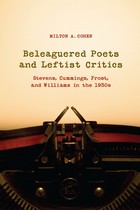 Beleaguered Poets and Leftist Critics: Stevens, Cummings, Frost, and Williams in the 1930s
Milton A. Cohen
University of Alabama Press, 2011 Different as they were as poets, Wallace Stevens, E. E. Cummings, Robert Frost, and Williams Carlos Williams grappled with the highly charged literary politics of the 1930s in comparable ways. As other writers moved sharply to the Left, and as leftist critics promulgated a proletarian aesthetics, these modernist poets keenly felt the pressure of the times and politicized literary scene. All four poets saw their reputations critically challenged in these years and felt compelled to respond to the new politics, literary and national, in distinct ways, ranging from rejection to involvement.
Beleaguered Poets and Leftist Critics closely examines the dynamics of these responses: what these four poets wrote—in letters, essays, lectures, fiction (for Williams), and most importantly, in their poems; what they believed politically and aesthetically; how critics, particularly leftist critics, reviewed their work; how these poets reacted to that criticism and to the broader milieu of leftism. Each poet’s response and its subsequent impact on his poetic output is a unique case study of the conflicting demands of art and politics in a time of great social change.
 Belfast: Segregation, Violence and the City
Peter Shirlow and Brendan Murtagh
Pluto Press, 2006 It is a commonly held view that the city of Belfast is emerging out of conflict and into a new era of tolerance and transformation. This book challenges this viewpoint. The authors pinpoint how international peace accords, such as the Belfast Agreement, are gradually eroded as conflict shifts into a stale and repetitive pattern of ethnically-divided competition over resources.
The book offers a vivid portrait of the human drama and brutality of the conflict in Belfast. The authors argue that the control of place remains the most important weapon in the politicization of communities and the reproduction of political violence. Segregation provides the laboratory within which sectarianism continues to grow. Examining the implications of these social divisions, the authors draw upon a wide international literature and provide insights that will be useful to students of geography, planning, politics, sociology and peace studies.
Belgians in Michigan
Bernard A. Cook
Michigan State University Press, 2007 At the beginning of the twenty-first century, Michigan was home to the second-largest Belgian population in the United States, and Detroit had one of the largest Belgian populations in the nation. Although immigration declined after World War I, the Belgian- American community is still prominent in the state. Political, religious, and economic conditions, including a nineteenth- century economic depression, helped motivate the move to America. Belgians brought with them the ability and willingness to innovate, as well as a tradition of hard work and devotion. The Gazette van Detroit, a Flemish-language newspaper first printed in Detroit in 1914, continues to be produced and distributed to subscribers throughout the United States and overseas. Belgian-Americans continue to incorporate traditional values with newfound American values, enabling them to forever preserve their heritage.
 Belief and Resistance: Dynamics of Contemporary Intellectual Controversy
Barbara H. Smith
Harvard University Press, 1997 Truth, reason, and objectivity--can we survive without them? What happens to law, science, and the pursuit of social justice when such ideas and ideals are rejected? These questions are at the heart of the controversies between traditionalists and "postmodernists" that Barbara Herrnstein Smith examines in her wide-ranging book, which also offers an original perspective on the perennial--perhaps eternal--clash of belief and skepticism, on our need for intellectual stability and our experience of its inevitable disruption.
Focusing on the mutually frustrating impasses to which these controversies often lead and on the charges--"absurdity," "irrationalism," "complicity," "blindness," "stubbornness"--that typically accompany them, Smith stresses our tendency to give self-flattering reasons for our own beliefs and to discount or demonize the motives of those who disagree with us. Her account of the resulting cognitive and rhetorical dynamics of intellectual conflict draws on recent research and theory in evolutionary biology, neuroscience, developmental psychology, and the history and sociology of science, as well as on contemporary philosophy and language theory.
Smith's analyses take her into important ongoing debates over the possibility of an objective grounding of legal and political judgments, the continuing value of Enlightenment rationalism, significant challenges to dominant ideas of scientific truth, and proper responses to denials of the factuality of the Holocaust. As she explores these and other controversies, Smith develops fresh ways to understand their motives and energies, and more positive ways to see the operations of intellectual conflict more generally.
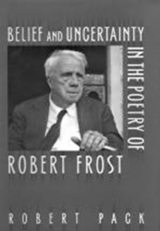 Belief and Uncertainty in the Poetry of Robert Frost
Robert Pack
University Press of New England, 2004 Robert Pack’s lifelong delight in Robert Frost's intricate, beautiful, and profound poetry shines through in the essays in this book. He confronts such broad themes as mourning, inheritance, nature, and the imagination, bringing to bear historical, psychological, Darwinian, and close-textual-reading interpretive approaches. Chapter one sets Frost’s work in the tradition of nature writing, from the Book of Genesis through modern American ecological works. Chapter two examines the profound influences of the Book of Job, Darwin, and evolutionary theory on Frost’s thinking. There follow chapters that structurally and philosophically compare Wordsworth’s “Michael” to Frost’s “Wild Grapes,” focusing on the themes of inheritance, grieving, and the potency of the imagination. The reader encounters Frost as teacher and preacher, Frost’s idea of how beliefs are affirmed, the simultaneous representation of adult memory and immediate childhood sensation, and the underlying duality of place and nothingness, which forms the existential background for his “stay against confusion”—the consoling purpose of Frost's poetic art.
Belief Is Its Own Kind of Truth, Maybe
Lori Jakiela
Autumn House Press, 2019 After her adoptive mother’s death, Lori Jakiela, at the age of forty, begins to seek the identity of her birth parents. In the midst of this loss, Jakiela also finds herself with a need to uncover her family’s medical history to gather answers for her daughter’s newly revealed medical ailments. This memoir brings together these parallel searches while chronicling intergenerational questions of family. Through her work, Jakiela examines both the lives we are born with and the lives we create for ourselves. Desires for emotional resolution comingle with concerns of medical inheritance and loss in this honest, humorous, and heartbreaking memoir.
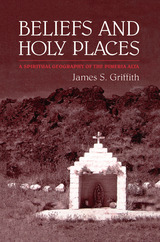 Beliefs and Holy Places: A Spiritual Geography of the Pimería Alta
James S. Griffith
University of Arizona Press, 1992 The region once known as Pimería Alta—now southern Arizona and northern Sonora—has for more than three centuries been a melting pot for the beliefs of native Tohono O'odham and immigrant Yaquis and those of colonizing Spaniards and Mexicans. One need look no further than the roadside crosses along desert highways or the diversity of local celebrations to sense the richness of this cultural commingling.
Folklorist Jim Griffith has lived in the Pimería Alta for more than thirty years, visiting its holy places and attending its fiestas, and has uncovered a background of belief, tradition, and history lying beneath the surface of these cultural expressions. In Beliefs and Holy Places, he reveals some of the supernaturally sanctioned relationships that tie people to places within that region, describing the cultural and religious meanings of locations and showing how bonds between people and places have in turn created relationships between places, a spiritual geography undetectable on physical maps.
Throughout the book, Griffith shows how culture moves from legend to art to belief to practice, all the while serving as a dynamic link between past and future. Now as the desert gives way to newcomers, Griffith's book offers visitors and residents alike a rare opportunity to share in these rich traditions.
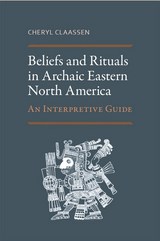 Beliefs and Rituals in Archaic Eastern North America: An Interpretive Guide
Cheryl Claassen
University of Alabama Press, 2015 A comprehensive and essential field reference, Beliefs and Rituals in Archaic Eastern North America reveals the spiritual landscape in the American Archaic period
Beliefs and Rituals in Archaic Eastern North America describes, illustrates, and offers nondogmatic interpretations of rituals and beliefs in Archaic America. In compiling a wealth of detailed entries, author Cheryl Claassen has created both an exhaustive reference as well as an opening into new archaeological taxonomies, connections, and understandings of Native American culture.
The material is presented in an introductory essay about Archaic rituals followed by two sections of entries that incorporate reports and articles discussing archaeological sites; studies of relevant practices of ritual and belief; data related to geologic features, artifact attributes, and burial settings; ethnographies; and pilgrimages to specific sites. Claassen’s work focuses on the American Archaic period (marked by the end of the Ice Age approximately 11,000 years ago) and a geographic area bounded by the edge of the Great Plains, Newfoundland, and southern Florida. This period and region share specific beliefs and practices such as human sacrifice, dirt mound burial, and oyster shell middens.
This interpretive guide serves as a platform for new interpretations and theories on this period. For example, Claassen connects rituals to topographic features and posits the Pleistocene-Holocene transition as a major stimulus to Archaic beliefs. She also expands the interpretation of existing data previously understood in economic or environmental terms to include how this same data may also reveal spiritual and symbolic practices. Similarly, Claassen interprets Archaic culture in terms of human agency and social constraint, bringing ritual acts into focus as drivers of social transformation and ethnogenesis.
Richly annotated and cross-referenced for ease of use, Beliefs and Rituals in Archaic Eastern North America will benefit scholars and students of archaeology and Native American culture. Claassen’s overview of the archaeological record should encourage the development of original archaeological and historical connections and patterns. Such an approach, Claassen suggests, may reveal patterns of influence extending from early eastern Americans to the Aztec and Maya.
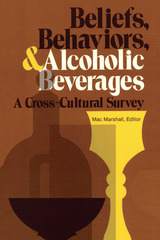 Beliefs, Behaviors, and Alcoholic Beverages: A Cross-Cultural Survey
Mac Marshall, Editor
University of Michigan Press, 1979 Beliefs, Behaviors, and Alcoholic Beverages: A Cross-Cultural Survey, edited by Mac Marshall, delves into the diverse ways that alcohol is woven into cultural, social, and religious contexts worldwide. This anthropological collection examines drinking customs, rituals, and social behaviors across different societies, highlighting the symbolic meanings, spiritual roles, and societal functions of alcoholic beverages. By exploring cross-cultural perspectives, the book reveals how alcohol consumption is not merely a personal act, but a complex social phenomenon tied to identity, community, and cultural values. The chapters, contributed by various scholars, investigate topics such as ceremonial drinking, indigenous brews, and the role of alcohol in shaping group dynamics and social boundaries. Each case study demonstrates how alcohol can reinforce cultural norms, solidify social bonds, and act as a means of expression within a community. By comparing different drinking traditions and beliefs, the book provides a broad understanding of the anthropological significance of alcohol in human life. This work serves as a valuable resource for students and researchers in anthropology, sociology, and cultural studies, as well as anyone interested in the ways alcohol influences cultural practices, societal roles, and human relationships across the globe.
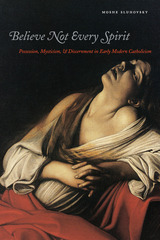 Believe Not Every Spirit: Possession, Mysticism, & Discernment in Early Modern Catholicism
Moshe Sluhovsky
University of Chicago Press, 2007 From 1400 through 1700, the number of reports of demonic possessions among European women was extraordinarily high. During the same period, a new type of mysticism—popular with women—emerged that greatly affected the risk of possession and, as a result, the practice of exorcism. Many feared that in moments of rapture, women, who had surrendered their souls to divine love, were not experiencing the work of angels, but rather the ravages of demons in disguise. So how then, asks Moshe Sluhovsky, were practitioners of exorcism to distinguish demonic from divine possessions?
Drawing on unexplored accounts of mystical schools and spiritual techniques, testimonies of the possessed, and exorcism manuals, Believe Not Every Spirit examines how early modern Europeans dealt with this dilemma. The personal experiences of practitioners, Sluhovsky shows, trumped theological knowledge. Worried that this could lead to a rejection of Catholic rituals, the church reshaped the meaning and practices of exorcism, transforming this healing rite into a means of spiritual interrogation. In its efforts to distinguish between good and evil, the church developed important new explanatory frameworks for the relations between body and soul, interiority and exteriority, and the natural and supernatural.
Believe What You Can: Poems
Marc Harshman
West Virginia University Press, 2016 This collection of poetry by West Virginia Poet Laureate Marc Harshman explores the difficulty of living with an awareness of the eventual death of all living things. Each of its four sections suggests a coping mechanism for this inevitable predicament, from storytelling, to accepting darkness and death as a creative force, to enjoying disruption and chaos, and finally to embracing the mystery of life as the most triumphant story of all.
These difficulties come “not quite haphazardly” and not without a “last light”—something “beyond” and as “sweet as apples.” With these moments of grace, Harshman taps into the satisfying richness that comes from unexpected revelations, helping us rise above the fragile recesses of life and death, all while portraying the lost rural worlds of the Midwest and Appalachia in ways untouched by sentiment or nostalgia.
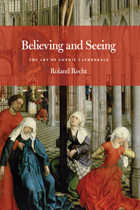 Believing and Seeing: The Art of Gothic Cathedrals
Roland Recht
University of Chicago Press, 2008 Developments in medieval science that elevated sight above the other senses found religious expression in the Christian emphasis on miracles, relics, and elaborate structures. In his incisive survey of Gothic art and architecture, Roland Recht argues that this preoccupation with vision as a key to religious knowledge profoundly affected a broad range of late medieval works.
In addition to the great cathedrals of France, Recht explores key religious buildings throughout Europe to reveal how their grand designs supported this profusion of images that made visible the signs of scripture. Metalworkers, for example, fashioned intricate monstrances and reliquaries for the presentation of sacred articles, and technical advances in stained glass production allowed for more expressive renderings of holy objects. Sculptors, meanwhile, created increasingly naturalistic works and painters used multihued palettes to enhance their subjects’ lifelike qualities. Reimagining these works as a link between devotional practices in the late Middle Ages and contemporaneous theories that deemed vision the basis of empirical truth, Recht provides students and scholars with a new and powerful lens through which to view Gothic art and architecture.
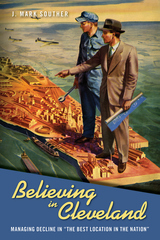 Believing in Cleveland: Managing Decline in “The Best Location in the Nation”
J. Mark Souther
Temple University Press, 2017 Detractors have called it "The Mistake on the Lake." It was once America’s "Comeback City." According to author J. Mark Souther, Cleveland has long sought to defeat its perceived civic malaise. Believing in Cleveland chronicles how city leaders used imagery and rhetoric to combat and, at times, accommodate urban and economic decline. Souther explores Cleveland's downtown revitalization efforts, its neighborhood renewal and restoration projects, and its fight against deindustrialization. He shows how the city reshaped its image when it was bolstered by sports team victories. But Cleveland was not always on the upswing. Souther places the city's history in the postwar context when the city and metropolitan area were divided by uneven growth. In the 1970s, the city-suburb division was wider than ever. Believing in Cleveland recounts the long, difficult history of a city that entered the postwar period as America's sixth largest, then lost ground during a period of robust national growth. But rather than tell a tale of decline, Souther provides a fascinating story of resilience for what some folks called "The Best Location in the Nation."
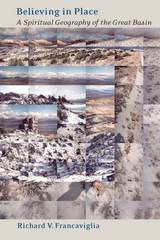 Believing In Place: A Spiritual Geography Of The Great Basin
Richard V. Francaviglia
University of Nevada Press, 2016 The austere landscape of the Great Basin has inspired diverse responses from the people who have moved through or settled in it. Author Richard V. Francaviglia is interested in the connection between environment and spirituality in the Great Basin, for here, he says, "faith and landscape conspire to resurrect old myths and create new ones." As a geographer, Francaviglia knows that place means more than physical space. Human perceptions and interpretations are what give place its meaning. In Believing in Place, he examines the varying human perceptions of and relationships with the Great Basin landscape, from the region's Native American groups to contemporary tourists and politicians, to determine the spiritual issues that have shaped our connections with this place. In doing so, he considers the creation and flood myths of several cultures, the impact of the Judeo-Christian tradition and individualism, Native American animism and shamanist traditions, the Mormon landscape, the spiritual dimensions of gambling, the religious foundations of Cold War ideology, stories of UFOs and alien presence, and the convergence of science and spirituality.
Believing in Place is a profound and totally engaging reflection on the ways that human needs and spiritual traditions can shape our perceptions of the land. That the Great Basin has inspired such a complex variety of responses is partly due to its enigmatic vastness and isolation, partly to the remarkable range of peoples who have found themselves in the region. Using not only the materials of traditional geography but folklore, anthropology, Native American and Euro-American religion, contemporary politics, and New Age philosophies, Francaviglia has produced a fascinating and timely investigation of the role of human conceptions of place in that space we call the Great Basin.
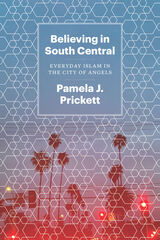 Believing in South Central: Everyday Islam in the City of Angels
Pamela J. Prickett
University of Chicago Press, 2021 The area of Los Angeles known as South Central is often overshadowed by dismal stereotypes, problematic racial stigmas, and its status as the home to some of the city’s poorest and most violent neighborhoods. Amid South Central’s shifting demographics and its struggles with poverty, sociologist Pamela J. Prickett takes a closer look, focusing on the members of an African American Muslim community and exploring how they help each other combat poverty, job scarcity, violence, and racial injustice. Prickett’s engaging ethnography relates how believers in this longstanding religious community see Islam as a way of life, a comprehensive blueprint for individual and collective action, guiding how to interact with others, conduct business, strive for progress, and cultivate faith.
Prickett offers deep insights into the day-to-day lived religion of the Muslims who call this community home, showing how the mosque provides a system of social support and how believers deepen their spiritual practice not in spite of, but through, conditions of poverty. Prickett breaks past the stigmas of urban poverty, revealing a complex and vibrant community by telling the stories of longstanding residents of South Central—like Sister Ava, who offers food to the local unhoused people and finds the sacred in her extensive DVD collection. In addition to her portraits of everyday life among Muslims in South Central, Prickett also provides vivid and accessible descriptions of Ramadan and histories of the mosque, situates this community within the larger story of the Nation of Islam, explores gender issues, and unpacks the interaction between African American Muslims and South Asian and Arab American Muslims, revealing both the global and local significance of this religious tradition.
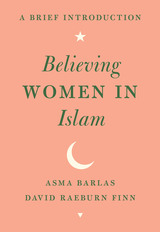 Believing Women in Islam: A Brief Introduction
By Asma Barlas and David Raeburn Finn
University of Texas Press, 2019 Is women’s inequality supported by the Qur’an? Do men have the exclusive right to interpret Islam’s holy scripture? In her best-selling book Believing Women in Islam: Unreading Patriarchal Interpretations of the Qur’an, Asma Barlas argues that, far from supporting male privilege, the Qur’an actually encourages the full equality of women and men. She explains why a handful of verses have been interpreted to favor men and shows how these same verses can be read in an egalitarian way that is fully supported by the text itself and compatible with the Qur’an’s message that it is complete and self-consistent. A Brief Introduction presents the arguments of Believing Women in a simplified way that will be accessible and inviting to general readers and undergraduate students. The authors focus primarily on the Qur’an’s teachings about women and patriarchy. They show how traditional teachings about women’s inferiority are not supported by the Qur’an but were products of patriarchal societies that used it to justify their existing religious and social structures. The authors’ hope is that by understanding how patriarchal traditionalists have come to exercise so much authority in today’s Islam, as well as by rereading some of the Qur’an’s most controversial verses, adherents of the faith will learn to question patriarchal dogma and see that an egalitarian reading of the Qur’an is equally possible and, for myriad reasons, more plausible.
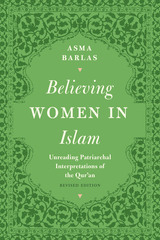 Believing Women in Islam: Unreading Patriarchal Interpretations of the Qur'an
By Asma Barlas
University of Texas Press, 2019 Does Islam call for the oppression of women? Non-Muslims point to the subjugation of women that occurs in many Muslim countries, especially those that claim to be "Islamic," while many Muslims read the Qur’an in ways that seem to justify sexual oppression, inequality, and patriarchy. Taking a wholly different view, Asma Barlas develops a believer’s reading of the Qur’an that demonstrates the radically egalitarian and antipatriarchal nature of its teachings. Beginning with a historical analysis of religious authority and knowledge, Barlas shows how Muslims came to read inequality and patriarchy into the Qur’an to justify existing religious and social structures and demonstrates that the patriarchal meanings ascribed to the Qur’an are a function of who has read it, how, and in what contexts. She goes on to reread the Qur’an’s position on a variety of issues in order to argue that its teachings do not support patriarchy. To the contrary, Barlas convincingly asserts that the Qur’an affirms the complete equality of the sexes, thereby offering an opportunity to theorize radical sexual equality from within the framework of its teachings. This new view takes readers into the heart of Islamic teachings on women, gender, and patriarchy, allowing them to understand Islam through its most sacred scripture, rather than through Muslim cultural practices or Western media stereotypes. For this revised edition of Believing Women in Islam, Asma Barlas has written two new chapters—“Abraham’s Sacrifice in the Qur’an” and “Secular/Feminism and the Qur’an”—as well as a new preface, an extended discussion of the Qur’an’s “wife-beating” verse and of men’s presumed role as women’s guardians, and other updates throughout the book.
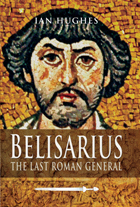 Belisarius: The Last Roman General
Ian Hughes
Westholme Publishing, 2009
Hughes has written a lively and detailed account of Belisarius’s remarkable career.” - Adrian Goldsworthy, author of The Complete Roman Army
Belisarius (c. 505–565 AD) was the greatest general of the Eastern Roman Empire and is among history’s most notable military personalities. At the age of 29, he twice defeated the Persians and reconquered North Africa from the Vandals, before going on to regain the Italian peninsula from the Ostrogoths, including the Eternal City, Rome. Fighting in the name of Justinian I, Belisarius recaptured large portions of the original territory of the ancient Roman Empire. However, Byzantium was both unwilling and incapable of retaining much of Belisarius’s hard-won advances, and soon after his death, the empire once again retracted.
In Belisarius: The Last Roman General, historian Ian Hughes recounts the life of this great soldier. In addition, he explains the evolution of classical Roman armies and systems of warfare into those of the Byzantine Empire, as well as those of their chief enemies, the Persians, Goths, and Vandals. Based on ancient source and drawing on a wealth of modern research, Belisarius’s career is set in the context of the turbulent times in which he lived and his reputation is reassessed to give a balanced portrait of this neglected giant among ancient commanders.
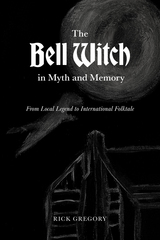 The Bell Witch in Myth and Memory: From Local Legend to International Folktale
Rick Gregory
University of Tennessee Press, 2023 Apparently, slumber parties in the mid-South 1970s were plied with a strange ritual. At midnight attendees would gather before a mirror and chant “I don’t believe in the Bell Witch” three times to see if the legendary spook would appear alongside their own reflections—a practice that echoes the “Bloody Mary” pattern following the execution of Mary Queen of Scots centuries ago. But that small circuit of preteen gatherings was neither the beginning nor the end of the Bell Witch’s travels. Indeed, the legend of the haint who terrorized the Bell family of Adams, Tennessee, is one of the best-known pieces of folklore in American storytelling—featured around the globe in popular-culture references as varied as a 1930s radio skit and a 1980s song from a Danish heavy metal band. Legend has it that “Old Kate” was investigated even by the likes of future president Andrew Jackson, who was reported to have said, “I would rather fight the British ten times over than to ever face the Bell Witch again.”
While dozens of books and articles have thoroughly analyzed this intriguing tale, this book breaks new ground by exploring the oral traditions associated with the poltergeist and demonstrating her regional, national, and even international sweep. Author Rick Gregory details the ways the narrative mirrors other legends with similar themes and examines the modern proliferation of the story via contemporary digital media. The Bell Witch in Myth and Memory ultimately explores what people believe and why they believe what they cannot explicitly prove—and, more particularly, why for two hundred years so many have sworn by the reality of the Bell Witch. In this highly engaging study, Rick Gregory not only sheds light on Tennessee’s vibrant oral history tradition but also provides insight into the enduring, worldwide phenomenon that is folklore.
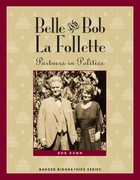 Belle and Bob La Follette: Partners in Politics
Bob Kann
Wisconsin Historical Society Press, 2008 The most famous couple in Wisconsin politics, "Fighting Bob" La Follette and his wife, Belle Case La Follette, come to life in the pages of the newest addition to the Badger Biographies series for young readers. In an accessible format that includes historic images, a glossary of terms, and sidebars explaining political concepts, students learn about Progressive politics and reform in the early 20th century through the experiences of this pioneering couple. The father of "Progressive politics," Bob La Follette was famous for digging in his heels when it came to reforming government corruption. He also gained a reputation for fiery speeches on the campaign trail and on the Senate floor. Belle La Follette was political in her own right. The first woman to graduate from the University of Wisconsin's Law School, she was an advocate for world peace and an agitator for the women's vote. She was also Bob's most trusted political advisor. Together, the couple raised a family and fought for the changes they believed would make the world a better place.
Bells of Change: Kathak Dance, Women and Modernity In India
Pallabi Chakravorty
Seagull Books, 2008
This is the first critical study of Kathak dance. Bells of Change traces two centuries of Kathak, from the colonial nautch dance to classical Kathak under nationalism and post-colonialism to transnationalism and globalization. Reorienting dance to focus on the lived experiences of dancers from a wide cross-section of society, the book narrates the history of Kathak from baijis and tawaifs to the global stage.
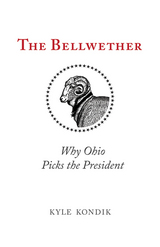 The Bellwether: Why Ohio Picks the President
Kyle Kondik
Ohio University Press, 2016 Since 1896, Ohio voters have failed to favor the next president only twice (in 1944 and 1960). Time after time, Ohio has found itself in the thick of the presidential race, and 2016 is shaping up to be no different. What about the Buckeye State makes it so special? In The Bellwether, Kyle Kondik, managing editor for the nonpartisan political forecasting newsletter Sabato’s Crystal Ball, blends data-driven research and historical documentation to explain Ohio’s remarkable record as a predictor of presidential results and why the state is essential to the 2016 election and beyond. Part history, part journalism, this entertaining and astute guide proposes that Ohio has been the key state in the Electoral College for more than a century and examines what the idea of the swing state has come to mean. In discussing the evidence, Kondik uses the state’s oft-mentioned status as a microcosm of the nation as a case study to trace the evolution of the American electorate, and identifies which places in Ohio have the most influence on the statewide result. Finally, he delves into the answer to the question voting Ohioans consider every four years: Will their state remain a bellwether, or is their ability to pick the president on its way out?
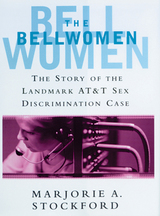 The Bellwomen: The Story of the Landmark AT&T Sex Discrimation Case
Stockford, Marjorie A
Rutgers University Press, 2004 In the early 1970s, David Copus, a young, long-haired lawyer, teamed up with his government colleagues to confront the mature and staid executives of AT&T over the company’s treatment of its female and minority employees. Their disagreement resulted in a $38 million settlement that benefited 15,000 employees, more than 13,000 of them women, and changed our perceptions of women’s and men’s roles in the workplace forever.
Copus, who worked for the Equal Employment Opportunity Commission (EEOC), was charged with representing American citizens who suffered from employment discrimination. Time and again he saw young, black women in the South being turned down for available jobs in local phone companies—usually as telephone operators—often for no valid reason at all. He and the EEOC decided to challenge AT&T’s company-wide sex discrimination practices. Eventually, AT&T’s corporate colleagues, witnessing AT&T’s capitulation, began to hire and promote women into better jobs themselves. At the same time, the EEOC started to more aggressively push corporate America to give women better opportunities.
The Bellwomen recounts the history of this case in a novelistic style, illuminating the motivations, strengths, and weaknesses of all the players, from AT&T corporate leaders, to the lawyers of the EEOC, to the female activists fighting for what they believed. Stockford also profiles three beneficiaries of the case, presenting their ambitions and achievements.
Combined with the power of America’s civil rights laws and the influence of the second wave women’s movement, this case provided a catalyst that drove many more women into the paid workforce in non-traditional jobs. By the late twentieth century, when women could be seen working everywhere, from construction sites to corporate offices, it appeared that they belonged there and always had.
Belmont Castle: The Excavation of a Crusader Stronghold in the Kingdom of Jerusalem
Richard Harper
Council for British Research in the Levant, 2000 This is the final publication of excavations conducted by the British School of Archaeology in Jerusalem on the Crusader castle of Belmont (Suba) between 1986 and 1989. The account of the excavation is accompanied by specialist reports and concludes with a discussion of the castle's architecture, its military functions, and its economic role.
Library of Congress subject headings for this publication:
Belmont Castle Site (West Bank)
Excavations (Archaeology) -- West Bank.
West Bank -- Antiquities.
Jerusalem -- History -- Latin Kingdom, 1099-1244.
| |
